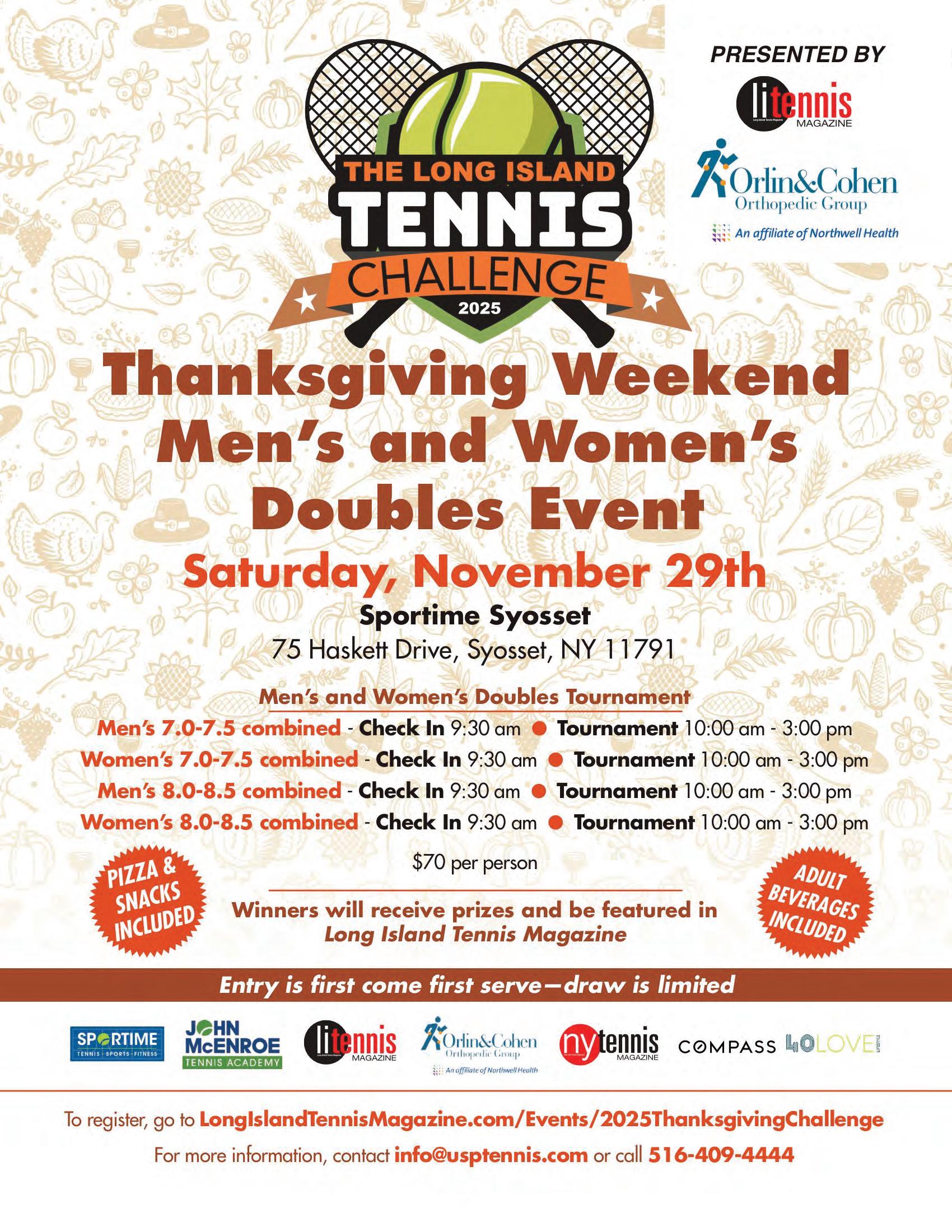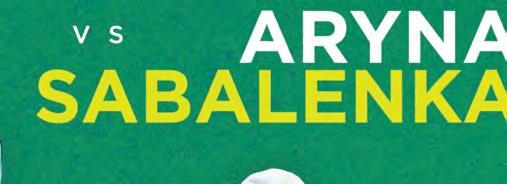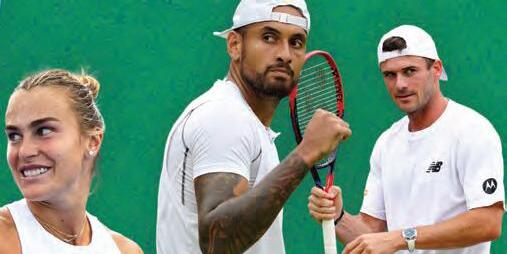









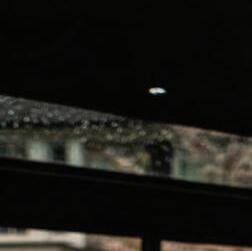















































































































































































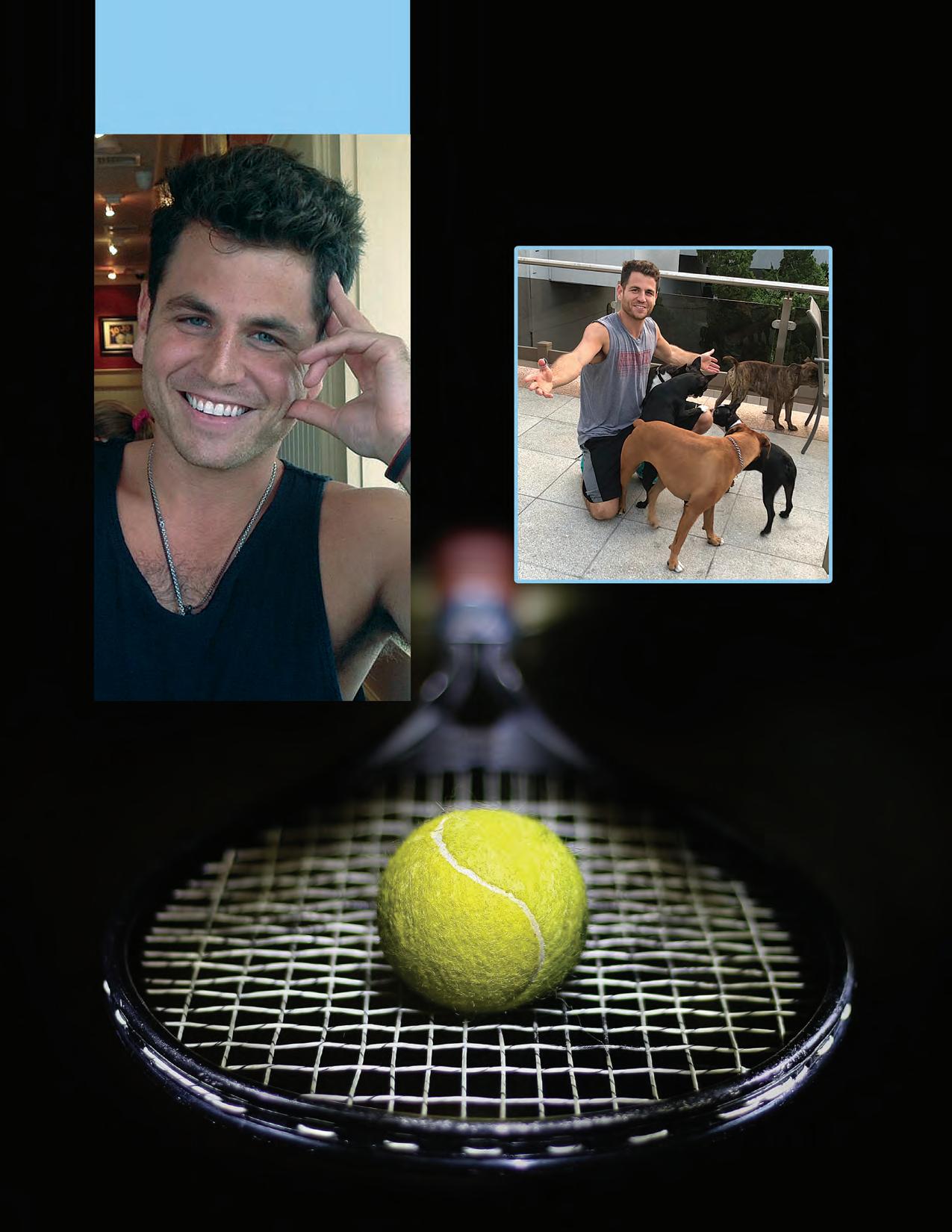
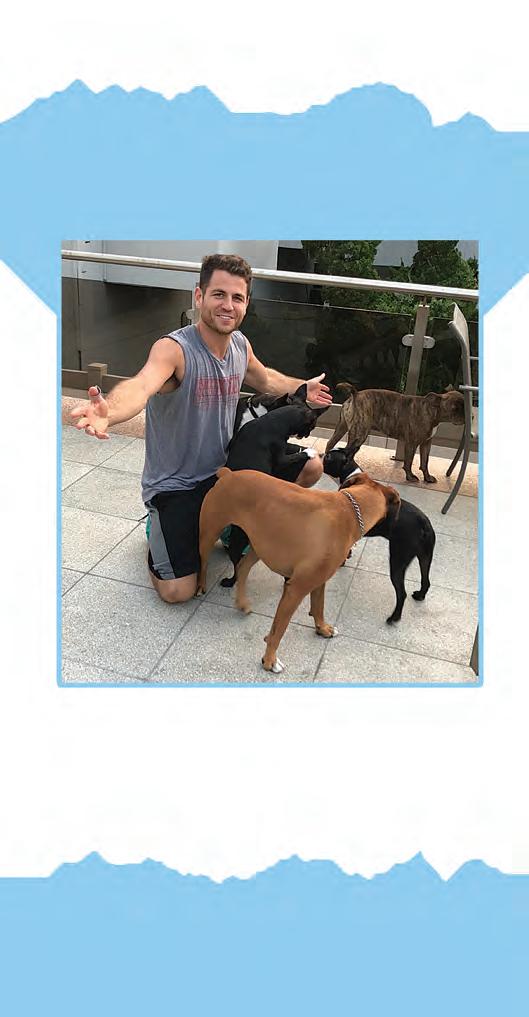



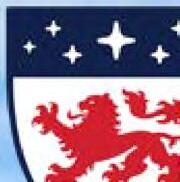





























































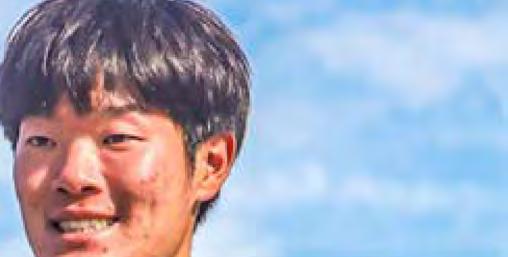


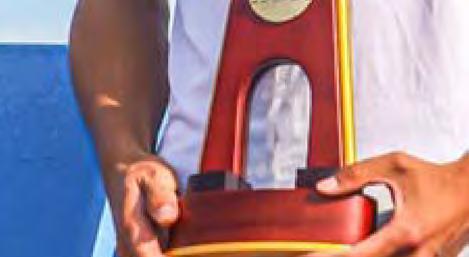



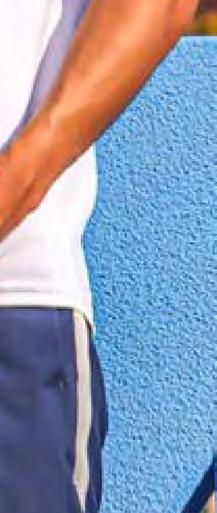













































































































































































































































































flocked to the Hamptons to close out the summer in style, as Long Island Tennis Magazine’s September Tennis Challenge hit the outdoor courts of SPORTIME Quogue. The event which was packed with over 125 players, combined top competition and a social, fun and festive atmosphere for all to enjoy.
The Presenting Sponsor of the entire Long Island Tennis Magazine Event Series is the highly respected Orlin & Cohen Orthopedic Group, and at their table players started the day by receiving many giveaways at check-in including tote bags, sun tan lotion, hats

and more. As players gathered on the pool deck for pre-tournament instructions you could feel the excitement for another big LI Tennis Magazine Challenge.
The event was completely sold-out and the large gathering of players, plus their friends and family, provided for a great atmosphere both on and off the courts. The event features fierce competition across 20 Har-Tru courts. Doubles pairings battled it out in round-robin competition that fed into the playoff rounds.
The LITM Challenge tournaments, which have been operating for over a decade, are well known for its
professionalism and organization as well for having great tennis at all levels! Additionally the amenities off the court are a LITM Challenge staple.
“The LITM Challenges have become almost like family reunions of sorts, as many of the players have become friends of mine and it’s a very welcoming atmosphere on and off the courts for everyone,” said Stefanie Hochhauser, who competed in the Women’s Doubles 7.0 –7.5 division. “Everyone gets to play a lot of tennis, the tournament runs on time, and we all get to enjoy food and drinks while we spend time together on and off the court.”
The tournament was run in a way where everything ran on time, and that we had food and drinks available for players throughout the tournament,” said co-tournament director Michelle Stoerback. ”
On this day, players were treated to an expansive catered lunch spread which included a variety of heroes, side salads, pizza, pasta, brownies/cookies, bananas, and drinks as well at the very popular Happy Hour during the tournament!
In a thrilling championship match in the Mixed Doubles 8. 0 – 8.5 division, Roman Del Castillo & Lily Tang defeated Andrew Villalta & Onalee Batcheller 76(3) to capture the title.
“Our strategy really depended on who we were playing against, and what our opponents were doing,” said Del Castillo. “We tried to do the best we could each match, that was really our strategy.”
Del Castillo is Tang’s coach, and the two put what they worked on during practice to the test in the tournament, which worked.
“This was such a fun tournament,” said Tang. “It was really well-run, and we had a great time.”
Linda Miller was all set to play with one partner, but when her friend couldn’t make it, she turned to another friend Kathy Fracasso to partner with her.
The partnership turned out to be a successful one, as Miller and Fracasso won 6-3 over Alissa Geer & Janeen McFarlane in the championship of the Women’s Doubles 6.0 – 6.5 division.
“Thankfully Kathy jumped in to play with me in the final hour, and we played great,” said Muller.
Fracasso added:
“Playing with Linda was the best part of the day. Everyone here was so nice, both on and off the court, there weren’t any bad calls. It was just a fun environment.”
Donald Jackson & Patrick Lombardi used their chemistry together from being colleagues at SPORTIME Kings Park, and came away victorious in the Men’s

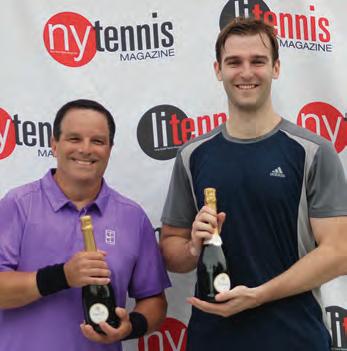

Doubles 7.0 – 7.5 division, defeating Sung Kwon & Ronald Martinez 6-0 in the finals.
“Our strategy was to keep the ball deep, and then come up to the net to finish off points, and it worked out,” Jackson said.
The Women’s 7.0 – 7.5 doubles division featured the largest division of competitors, and the pairing of Annie Yueh & Lindsay Klausner-McMahon were able to overcome all of them to win the title.
After winning their flight, the duo advanced to the knockout rounds and won their quarterfinal and semifinal
matches, before toppling Ingrid Eberly & Grace Appel 6-3 in the championship match. “We play at the same club, but this was our first tournament together,” said Klausner-McMahon. “We’ve done drills before, but never as a doubles team. When we decided to sign up together, we practiced a couple of times, and it worked.”
Despite not playing together prior, their familiarity with each other proved to be a valuable asset on their road to victory.
“We communicated a lot, and we
continued on page 6





both know each other’s strengths so we just tried to play to those,” Yueh added.
Chris Kolesnik & Neil Hyman repeated as champions in the Men’s Doubles 8.0 – 8.5 division, successfully defending their June title with another win, this time overcoming the windy conditions. “Once we were able to get back to basics, our game worked,” said Kolesnik.
Hyman added:
“It was a tough day, but we were able to lock in for the championship. We’ve been playing together for a few years now, and always enjoy coming to these tournaments. Everything about them is great.”
Diedre Ettus & Lauren Brenner were the final team accepted into the draw, and they made it count, as they won three playoff rounds in order to win the title in the Women’s 8.0 – 8.5 division. “My favorite part was getting to play with Lauren,” Ettus said. “I used to play here [at Quogue] years ago, but I haven’t played as much because of some surgeries I have had, so it was nice to be able to be back, and add to my memories here.”
On their strategy, Brenner said: “I tried to be aggressive at the net, and I knew Diedre had my back at


the baseline.”
A year ago, Junji Nakamura and his son, Koichi, came up just short in the championship match of the Men’s Doubles 9.0 – 9.5 division, but this time around, the two came away victorious. “We work pretty well as a team, and have good chemistry on the court,” said Koichi.
“He’s a year older, and that makes a big difference,” Junji said of his son. “Overall, it was a great tournament. Great people, it’s a fun and friendly atmosphere, so we’re always happy to come back, and









we’ll be back to defend our title.”
The September Tennis Challenge was the ideal way to close out the summer, and players were able to enjoy themselves on the court, and then embrace the food, drinks and U.S. Open women’s singles final that was being shown on the pool deck. All of it combined to create another version of Long Island’s premier adult tennis tournament.






“I would like to thank our title sponsor Orlin & Cohen Orthopedic Group for their amazing support in helping us put on a professionally-run and successful event. We pay a lot of attention to the small details and we continue to learn from each event, but I want to thank my CoTournament Director Michelle Stoerback, all of our sponsors and all of our supporting players for their part,” said Tournament Director David Sickmen.
“Each tournament, we continue to see returning faces, but are also pleased to keep seeing new players join us from all across the Metropolitan area, which is a great indication of the event’s continued growth, and we are excited to host our next tournament later this fall.”
The next Long Island Tennis Magazine Challenge event is set for Saturday, November 29 at SPORTIME Syosset. Visit www.LongIslandTennisMagazine.com/Ev ents/2025ThanksgivingChallenge to learn more and register.

HarrisBlitzer Sports & Entertainment (HBSE) and Unified Events will partner on a marquee tennis event featuring two best-of-three matchups featuring some of the top tennis players in the world entitled ‘A Racquet at The Rock.’
The marquee matchups will feature 2025 Wimbledon and US Open finalist Amanda Anisimova facing off against 2021 US Open Champion Emma Raducanu, followed by a clash between sixtime Major Champion, Carlos Alcaraz, fresh off his US Open Championship and new World Number One ranking, battling against two-time US Open Semifinalist Frances Tiafoe.

The inaugural event will be held on Sunday, December 7, 2025, at 5:30 p.m. ET, in Newark, New Jersey at the Prudential Center and will be the first tennis event in the 18 plus year storied history of the building.
• Best of three sets between Carlos Alcaraz vs. Frances Tiafoe
• Best of three sets between Amanda Anisimova vs. Emma Raducanu
‘A Racquet at The Rock,’ the inaugural unique exhibition celebrating the world's best tennis players will provide fans the opportunity to see their favorite players take the court at New Jersey’s biggest stage, Prudential Center. The event will also pay homage to New Jersey’s own tennis history, with more details being subsequently announced.
Experience it Live Tickets for ‘A Racquet at The Rock’
presented by Turkish Airlines are on sale NOW! Tickets are available for purchase at Ticketmaster.com, Prucenter.com, and Prudential Center’s Box Office. For Premium seating opportunities, visit prucenter.com/premium.
Various exclusive VIP packages will also be available for purchase, including the Courtside Club seating package. This package includes allinclusive Food and Beverage (beer, wine, and soft drinks) in the Prudential Lounge from 4:00 PM – 8:00 PM.
Additional beverage options available for purchase. The offer includes a photo opportunity with select players; availability may vary. Full details will be emailed to purchasers before the event.
“It is always a lot of fun to be on the court with Frances—we love to compete against each other, and I can’t wait to put on a great show for
the fans in Newark. To play again in the metropolitan area with all the amazing fans, it's something special. They bring such unique energy, and they love tennis so much. I’m looking forward to December 7 at Prudential Center, it will be a special night of great tennis.” - Carlos
Alcaraz
“Carlos and I have played many incredible matches throughout the years on the biggest stages in the world. We always bring out the best in each other and I am looking forward to putting on a show for the great fans in the tri-state area on December 7 at the inaugural ‘A Racquet at The Rock.’” - Frances Tiafoe
“It's a special feeling to return to the place where my tennis dreams first began. I am looking forward to playing against one of the best players in the world in Emma and having the opportunity to do so in my original home state of New Jersey. It will be an incredible celebration of tennis on December 7 at the inaugural ‘A Racquet at The Rock.’”Amanda Anisimova
“Playing at the inaugural ‘A Racquet at The Rock’ against Amanda is an exciting way to end the season. Our matches are always competitive, and we will make sure to put on a great show on December 7. The energy of a packed arena, especially in the tri-state area, is unmatched. I’m incredibly excited to play and feed off the crowd's atmosphere for this extraordinary event.” - Emma Raducanu




Nearly30 years ago, Chrissie, John and their father Jimmy established the Evert Tennis Academy in Boca Raton, Florida. By combining the experience of a champion with world-class coaching, cutting-edge training methods and premier facilities the Evert Tennis Academy is able to offer unrivaled programs for players of all ages and abilities.
The Evert Tennis Academy (ETA) is located in the Mission Bay area of Boca Raton, Fla. With 23 courts, pristine grounds, state-of-the-artequipment, a caring staff and family atmosphere combine to make ETA a beautiful and unique training environment.
As the proud home to more than 20 Grand Slam participants and over 150 Division I college athletes, the Evert Tennis Academy has a proven record of success in developing champions at the highest levels. Chris Evert, tennis legend and winner of 18 Grand Slam titles, and John Evert, world-renowned developmental
coach and academy director, believe in designing personalized programs that consist of a strategic balance between technical, tactical, mental and physical training. They pride themselves on handpicking some of the finest developmental coaches working in the sport who are dedicated to the instruction, development and success of each athlete
The Academy Program at Evert systematically addresses every aspect of a player’s game through a daily regimen of technical, tactical, mental and physical training. The Morning Training Session is composed of drilling, and strength and conditioning. The program is continued in the afternoon with a focus towards competition and tactics.
The Developmental Program at Evert Tennis Academy is designed to take players to the next level by providing a very exclusive, individualized program and the difference between it and the

Academy Program lies within the daily 1:1 lesson. Boarding students age 17 and younger enrolled in the Full-Time, Weekly or Camp programs, stay in our on-campus three-story dormitory. Each dorm room houses up to two students during the school year and up to four students during Camp and Summer Sessions with boys and girls being housed in separate buildings.
Evert Tennis Academy conveniently provides one-on-one airport transportation for its boarding students, for a fee (subject to change), to all three area international airports: (PBI) West Palm Beach (35 minutes), (FLL) Fort Lauderdale (35 minutes), (MIA) Miami International (55 minutes). All transportation coordination is handled directly through the Academy, making it stress-free and easy for you.
Please contact Evert Tennis Academy at (561) 488- 2001 for more information or e-mail mateo.garces@EvertAcademy.com
After another great season in 2025, can Shelton take the next step?
By Brian Coleman

The progress of a young athlete is never linear. For all the improvement you have, and the success you achieve on the court, life has a way of knocking you down a peg.
That is just what happened to rising American star Ben Shelton, who was in the midst of the best season of his career, but it’s a season that will unfortunately be marred by injury in its final months.
“Usually I’ll play through anything and just kind of find a way. And whether it’s sickness or injury, if I can stay out there, I can stay out there. I never felt anything like this before. That was kind of tough.”
Those words came from Shelton himself at this year’s U.S. Open, when he retired from his third-round match against veteran Frenchman Adrian Mannarino before the fifth set began. The two lefties were battling it out when Shelton used his left arm to brace his fall during the third set, and could be seen grimacing and favoring his shoulder from that moment on.
His serves were affected, and he could not get the typical whip and torque on his
continued on page 12
continued from page 11
forehand that we have become accustomed to seeing. At the end of the fourth set, Shelton made the difficult decision to retire from the match, unable to battle through the unrelenting pain.
“I was just trying to adjust and figure out whatever I could to keep competing,” he added. “Even though I was in pain, I was just kind of in that competitive mindset of trying to find a way and push through it.”
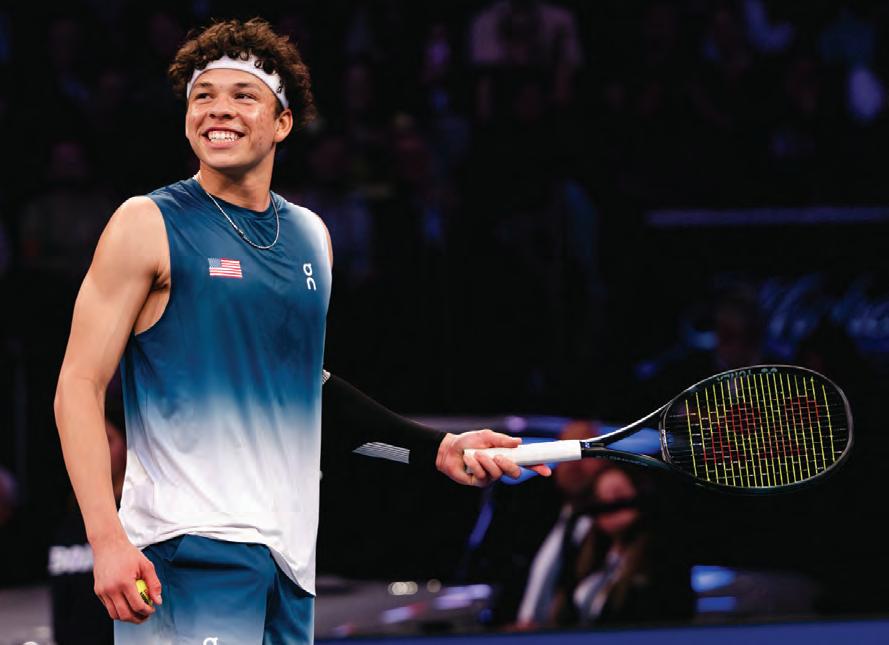
The injury has now soured what had been an incredible summer and a great season overall. At the beginning of the year, Shelton


reached the semifinals of the Australian Open, the second major semifinal of his career, and the quarterfinals at Wimbledon. Both times, he lost to eventual champion
Jannik Sinner. And in the latter part of the summer, in the lead-up to the U.S. Open, Shelton won the biggest title of his career at the Canadian Open in Toronto, where he

























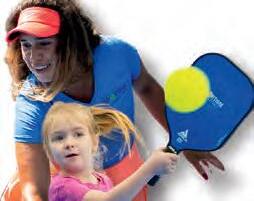













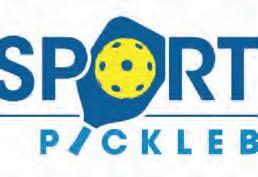









defeated Karen Khachanov in a thrilling three-set final to win his third career title, and his most notable yet, this one coming at an ATP Masters 1000 Event..
“It’s a surreal feeling,” he said at the time. “It’s been a long week, not an easy path to the final. My best tennis came out when it mattered most. I was clutch, I persevered, I was resilient. All the qualities I like to see in myself.”
And that should be Shelton’s takeaway and focus as we move towards the end of 2025 and head into 2026.
“It’s been a great summer, a lot of things to be thankful for,” he reflected. “You won’t hear me over here pouting about how bad things are with the summer that I’ve had, the things that I’ve been able to do in this sport in a short amount of time and the people I got around me. Like I said, a lot of blessings.”
That support system around Shelton is something he has leaned on after suffering the first significant setback of his professional career. And that includes his father and coach, Bryan, as well as girlfriend Trinity Rodman. The latter is one of the best soccer players in the world, and thus is someone that can
relate to Shelton as a fellow professional athletes.
Now up to sixth in the world in the ATP World Rankings, Shelton has officially transitioned from upand-coming talent to bonafide star, and the expectations have clearly risen for him. Not since the 2003 U.S. Open has an American man won a major, and Shelton is whom many believe can snap that streak.
Shelton has come a long way in a short period of time, and still has areas where he can grow, something that is necessary if he is going to topple the new Big Two in the aforementioned Sinner and Carlos Alcaraz. Bryan Shelton has consistently emphasized that his son is not a finished product yet, and as a self-described “tennis nerd”, the former Top 30 player really relishes the task of elevating his son’s game to the next level.
“Ben’s a lefty, and so it’s been fun to really dive in and see what made [Rafael] Nadal so great, as far as just how he carried himself, but also his tactics and patterns of play and just the things that made him really, really tough to beat out there,” said Bryan. “[I can] try to help Ben to understand some of the things that Rafa did, that he can also try to emulate…It’s fun for me to dive in deep and look at not only
Ben’s stats and the analytics, but look at other players out there, like Alcaraz and Sinner, and see what makes them great and really try to keep learning as we go through this process.”
With Shelton’s injury sidelining him for the majority (if not all) of the final months of 2025, it gives him time to not just hit the restart button from a physical standpoint, but also from a mental one. If the last image we see of Shelton on the tennis court in 2025 is his tearful presence on the U.S. Open bench, it will be unfortunate, but will only mean the American will enter next season fresher than ever.
The appetite for an American man to win a major only grows with each passing year, and Shelton will look to satisfy that hunger in 2026, as expectations, both externally and internally increase.
“His ability to weather his way deep into slams is becoming very impressive,” said Andy Roddick, who knows what it takes to win a major. “And I think, maybe, for the first time he’s on that next three or four list [of guys who can win a Slam] when you’re looking. It’s not ‘hope I do well at a Slam’. It’s, ‘I expect to do well at every Slam.’”

By Brian Coleman
Absence oftentimes makes the heart grow fonder.
Lily Castka began playing tennis when she was six years old, inspired by her older cousin Abby, who Lily has looked up to as she has grown up . She then joined group programs at Eastern Athletic Club in Blue Point, and her tennis journey began.
When she was in second grade, Castka suffered a setback, as she broke her elbow, which sidelined her from tennis for quite a while. It was a blessing in disguise though, as during those painful months she realized how much she loved tennis, and how badly she wanted to get back out on the court.
“As soon as I was finished with my recovery, I started taking private lessons so I could catch up and make up for the time I missed,” said Castka. “That really sparked my love of playing, and inspired me to want to play as much as I could, beyond just taking part in groups. It really made me want to get better and put more work in.”

tournaments.
“Lily is someone who has always been open to development, and trusting the process, and her family has been supportive of that as well,” said Dylan Roberts, Castka’s coach at Eastern Athletic. “She understood that there was going to be ups and downs, and has always put a lot of trust in me and what we do here. I think being able to have an open dialogue, especially when she was younger, has been incredibly important, and she’s a great listener who is always looking to soak up as much information to give her a better opportunity to succeed.”
That has paid dividends as Castka is now a nationally-ranked player. She is one of the best players training in Eastern Athletic’s programming and has recently begun competing in more national level tournaments to gain more experience and continue to test herself against top players.
She did just that, committing to play six to seven days a week at Eastern Athletic, and signing up to play more
“It’s been a lot of fun,” she said of competing on a larger scale. “I never really thought about playing in national tournaments when I was younger, but it’s been a great experience, being able to meet new people and compete
against new players. I love traveling and making new friends, it’s probably one of my favorite parts about playing these events, so I’ve been enjoying it a lot.”
Castka has also been a key factor in the success of the Bayport-Blue Point girls’ tennis program, helping to elevate her team to heights it had never reached before.
The Bayport-Blue Point junior has been an integral part of the Phantoms lineup since she was in middle school, and for the last four seasons, her team has been the Suffolk County Small School Champions.
And last season, for the first time, they captured the Long Island Championship to qualify for the New York State Championships, also for the first time in program history. In the Long Island final against Cold Spring Harbor, Castka fought back from 0-3 down in the third set to win at second singles and clinch the title.

said after that win. “I told myself to get one game and start from there.
“I took a couple of deep breaths on that third set changeover, and told myself to just get every ball back into the court, and wait for my opportunity to put balls away, but not rush it,” she
Once I was able to get that game, I could feel the momentum, and took it point-by-point.”
While the Phantoms would come up short at States, it only adds more motivation for the group.
This fall, Castka will remain a team


leader, and moves up to the first singles court, where she and her teammates are eager to continue progressing as a program, which means winning another Long Island title, and competing for the state title once again.
“I’m extremely proud of our team because of all the work we put in during practice,” said Castka, who also won the Section VIII-Division III singles title in 2024. “The environment that everyone creates together makes it so enjoyable. We’re just trying to take it one match at a time this season, and we’re just focused on trying to do our best every time we go on the court.”
Being a tight-knit group can make a player feel comfortable when on the court, and can provide an extremely important support system for a player. Castka has found that not only at BayportBlue Point, but has felt that at Eastern Athletic since the first time she began playing there more than a decade ago.
“It’s like a whole other family,” she
continued on page 16

continued from page 15
said. “The environment is so welcoming, and I love it there. That’s why I have stayed all these years. I’ve been going there after school for a long time, and it’s another home for me. All the coaches have been so supportive and helpful.”
It isn’t just the comfortability that Eastern Athletic has provided for Castka, but also the level of coaching. When she was in eighth-grade, she began training primarily with Dylan Roberts. In those few years, the two have formed a coach-player relationship that has paid dividends, and the fruits of its labor is showing.
“He’s really opened my eyes and shown me what real tennis is,” Castka said, explaining how Roberts has really guided her on how to construct points, and helped her better understand tactical tennis. “He really

helped inspire me, and find my love for the game. I wouldn’t be where I am now without everything he’s done for me.”
With two years remaining in her junior tennis and high school tennis career, Castka is excited for what lies ahead in her journey. Her goal is to continue improving and be able to play at the collegiate level.
“Every time we train and practice, or go to matches, we’re always learning how to compete better. Whether that’s a better routine before or after the match, it’s about making sure she is ready for all that can happen in a match,” added Roberts. “We are also sharpening her weapons, and understanding how and when to dictate properly. I think it’s a big thing to not be passive and reactionary, but instead be proactive on the court, whether that’s your presence or your level of play. And those are things we are working on to take her game to the next level.”

Aftera successful return to Madison Square Garden in 2024, The Garden Cup brings star-studded professional tennis back to New York City on December 8.
“Madison Square Garden holds a special place in tennis history. The Garden has hosted both the men’s and women’s year end championships and legends such as Suzanne Lenglen, Bill Tilden, Don Budge and Jack Kramer all played there,” said Adam Their, the former Vice President at MSG Sports who now works as a sports event promoter. “In more recent times since Roger Federer and Pete Sampras sold out the arena in 2008, the Garden has been synonymous with iconic tennis moments. For players, it’s a bucket-list venue with an electric atmosphere that only ‘The World’s Most Famous Arena’ can offer.


For fans, the intimacy of the setup means there’s no bad seat – everyone is close to the action, and the chance to spot celebrities in the crowd adds to the allure. It’s truly an unmatched experience for both players and fans.”
Last year, Ben Shelton, Carlos Alcaraz, Jessica Pegula and Emma Navarro lit up the Garden with their electric performances, and the on-court excitement will be no different this year.
This December, American Tommy Paul will square off
against Australia’s Nick Kyrgios, while the two-time reigning U.S Open Champion Aryna Sabalenka battles former U.S. Open champ Naomi Osaka. There will be two singles matches, followed by a Mixed Doubles match featuring all four.
“The Garden Cup exceeded all expectations with a sellout crowd creating an unforgettable atmosphere,” Thier said. “For two days, the players lit up New York City with their smiles—whether at press events, clinics, sponsor parties or putting on an incredible show on the court.”
The players themselves last year were thrilled with the event, and understood the magnitude of playing tennis inside one of the world’s greatest venues.
“I can’t believe we’re here at The Garden playing tennis,” Pegula said. “It’s so cool.”
Navarro added:
“[It’s] just so special to be here playing in this arena. It’s insane. We came to the Knicks game last night and now they have a tennis court.”
Those same vibes will be on display this year, as Paul, Kyrgios, Sabalenka and Osaka will entertain the capacity crowd with their tennis, and their showmanship.
The Garden Cup arrives on Monday, December 8, and tickets are now available on Ticketmaster and Vivid Seats.


Welcome to the 35th Annual USTA Long Island Regional Awards!
Tonight is an evening of celebration as we congratulate and recognize the Long Island junior, adult, high school, and USTA league players who will receive awards based on their play, accomplishments and dedication to the game we all love. As we come together, let’s take a moment to recognize the game itself, which continues to see great participation growth, as we work to reach the USTA National’s goal of 35 by 35 (35 million players by the year 2035). To help make this happen, the USTA LI Regional Council is happy to host an evening that not only gives us an opportunity to recognize you, but more importantly an opportunity to see you and hear from you. It’s a yearly reminder of how diverse and special the Long Island tennis community truly is.
We, the USTA Long Island Regional Council, will work to help reach the USTA’s goal by continuing to reach out to the entire Long Island community to bring tennis to people of all ages and skill levels. We will also provide continued support and education in existing areas including awarding LI Regional Grants to foster new and innovative programing. Without the dedication of our regional council members (all volunteers), who give their time throughout the year, we would not be able to conduct the various activities that allow us to make this happen.
Speaking of activities, during the past year, the USTA LI Regional Council was privileged to again volunteer our time at the tennis portion of the Long Island Special Olympics, and be a sponsor of the Games. We continued our support of Robbie’s Run and their mission of providing CPR training and AEDs. We hosted a chat and book signing by author Robert Lopez at a Court & Cocktails event during Hispanic Heritage Month. We provided a day of introductory tennis to hundreds of children in Nassau and Suffolk County at two Summer Kids’ Days and a Park Day. We co-sponsored “Girls Day” an event with USTA Eastern, the Women's Sports Foundation, and Eisenhower Park to give girls ages 8-12 an opportunity to play/experience tennis. The event saw Genie Bouchard and Epiphanny Prince come down and participate, and culminate with the donation of $50,000 by the WSF to Eisenhower Park to help with the refurbishment of the tennis courts. We also partnered with the Bridges to Adelphi program to provide an afternoon of training to staff and play, for neurodiverse students.
Many of these events would not have been successful without our many partnerships. Thank you to our partner Long Island Tennis Magazine for their ongoing support and
publicizing of these initiatives, and to Eisenhower Park, LuHi Camp, Sportime Hempstead Lake and Island Quest Camp for hosting some of these events.
We proudly continue our support of high school tennis. Each Nassau and Suffolk public high school team was provided special plaques that allowed coaches to recognize one player on each of their respective teams for outstanding sportsmanship during the 2024-25 girls’ & boys’ seasons. I was pleased to have the honor of presenting plaques to the winners and runnerups to the players from Nassau and Suffolk County who competed in the Large Schools and Small Schools Long Island Championships. Lastly, we also provided sweatshirts to all Long Island girls and boys competing at the New York State Individual Championships.
Our high school tennis teams and their players once again had exceptional seasons. Our girls’ season saw Long Island taking both NYS Individual titles. Angel Walia – from Herricks H.S. - won the NY State Singles title while the Suffolk girls’ doubles champions - Emilia Romano & Evie Romano from Bayport-Blue Point H.S. - won the NY State doubles title. In team competition, both the Syosset and Bayport-Blue Point girls’ teams finished as the runner-ups in the Large & Small School NY State Team Tournaments. The boys’ season saw the Nassau teams win the NY State Large Schools and Small Schools Team titles. Syosset H.S. three-peated as the boys Large School Champions while Friends Academy broke thru to win the Small School title after finishing as a runner-up the last two years.
We ask you to pay it forward by sharing, participating in and supporting the sport we all love by working with us on these and other programs and activities. By all of us doing our part, we will reach the goal of 35 by 35 (35 million players by 2035) set forth by USTA National, making the U.S. the world’s number one tennis-playing nation (by population) in the world.
Lastly – On behalf of the Long Island Regional Council and myself, I would like to express my deep gratitude and thanks to Jenny Schnitzer – USTA Eastern Executive Director & CEO for her many years of support of the Long Island Region and to the game of tennis. Without her, this award’s evening and the many activities we provide wouldn’t be possible.
Make sure to visit our web site, Facebook and Instagram pages frequently, and if you don’t already, please subscribe to our quarterly newsletter, “On the Ball: News from LI.”
I look forward to continuing the work we are doing and to reaching out and creating new pathways for those who have never had the opportunity to play and experience the “World's Healthiest Sport”.
Michael Pavlides Long Island Regional Director (volunteer)
Want to see photos from tonight’s awards or from past years? Need more information on our fabulous honorees and past awardees? Inspired to nominate someone for an award for next year? Visit www.longisland.usta.com for all you need to know about our Long Island Regional Awards Dinners from past to present!
Hy Zausner Lifetime Achievement Award
Maureen McFadzen
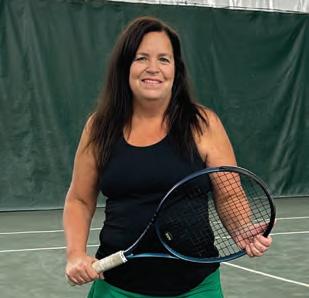
Vitas Gerulaitis
“For the Love of Tennis” Award
Amy Gillen
Rose Buck Scalamandre Tennis Family of the Year
The Lombardi Family
Arthur Ashe Multicultural Award
Fernando Juguera
Adult Volunteer of the Year
Bon Koo

Daniel Burgess, Sr. Community Service Award
Kevin Boston-Hill
Junior Volunteer of the Year
Graydon Archondo
Tennis Club of the Year
Deer Park Tennis Club
Private Club of the Year
Huntington Crescent Club
Tennis Professional of the Year (Adult)
Gary Gaudio
Tennis Professional of the Year (Junior)
Anna Bielen Zarska
Long Island High School Tennis Team of the Year
Commack H.S. Girls Team
Birdie Tarulli League Captain Award
Jacqueline Peiffer
Blane Magee League Captain Award
Don Jackson
Anuj Agarwal Junior Sportsmanship Award
David Meyers
Jennifer Sherry Junior Sportsmanship Award
Sofia Kedrin
Madeline Zausner Junior Tournament Director Award
Rong Ma
Good Samaritan Award
Felipe Sobrinho
10-and Under Tennis Award
Advantage All Tennis Foundation
Nassau County Boys Singles Champion
Manhasset H.S. - Max Golubenko
Nassau County Boys Doubles Champions
Garden City H.S. - Ben Wiese & Christian Bravo
Suffolk County Boys Singles Champion
Walt Whitman H.S. - Sam Lopez-Cardenas
Suffolk County Boys Doubles Champions
Half Hollow Hills East H.S.
Lohit Madisetty & Marcus Gonzales
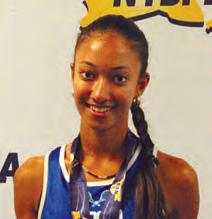
NYS Girls Singles Champion
Herricks H.S. Angel Walia

Nassau County Coach of the Year Friends Academy - Owen Kassimir
Suffolk County Coach of the Year
Bayport-Blue Point H.S. - John Selvaggio
(as of 8/6/25)
Boys 12 singles: #1 Yifan Nie, #2 Shuo Li
Boys 14 singles: #1 Jacques Chen, #2 Kanin Michael
Boys 16 singles: #1 Rocco Roti, #2 Kurt Sayan
Boys 18 singles: #1 Jack Kennedy, #2 Zavier Augustin
Girls 12 singles: #1 Catherine Chan, #2 Aya Iwata
Girls 14 singles: #1 Blake Chang, #2 Gabrielle Brereton
Girls 16 singles: #1 Paige Wygodzki, #2 Anabelle Janczyk
Girls 18 singles: #1 Sophia Holod, #2 Paige Wygodzki
Men
Open Singles: #1 Dillon McKenzie
35+ Singles: #1 Mickey Nisar
Nassau County Girls Singles Champion
Garden City H.S. - Angelina Bravo
Nassau County Girls Doubles Champions
Great Neck South H.S. - Gabrielle Alexa Villegas & Madison Lee
Suffolk County Girls Singles Champion
Smithtown East - Anya Konopka
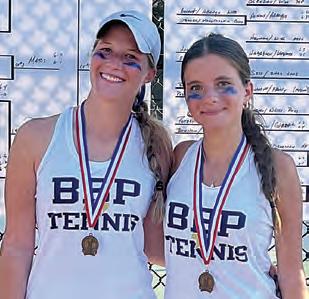
NYS & Suffolk County Girls Doubles
Champions
Bayport-Blue Point H.S.
Emilia Romano & Evie Romano
40+ Singles: #1 Mickey Nisar
45+ Singles: #1 Gerry Bohner
50+ Singles: #1 Gerry Bohner
55+ Singles: #1 Adrian Chirici
60+ Singles: #1 Jonathan Klein
65+ Singles: #1 Steven Brill
70+ Singles: #1 Steven Brill
75+ Singles: #1 Marshall Hubsher
Women
Open Singles: #1 Tracey Gottlieb
35+ Singles: #1 Morgan Milleisen
45+ Singles: #1 Betsy Bickar
50+ Singles: #1 Betsy Bickar
55+ Singles: #1 Ellen Markowitz
60+ Singles: #1 Ellen Markowitz
65+ Singles: #1 Lisa Jett
70+ Singles: #1 Lisa Jett
Family
Father/Son All Ages: Jack Varghese & Vishal Varghese
Father/Son 60+: Adam Rosen & Benjamin Rosen
Father/Son 70+: John Titcomb & Brett Titcomb

Spring 2024
18 & Over 3.0 Women – Sectional Champions
Point Set Indoor Tennis - Captain: Laura Crain
40 & Over 3.0 Women – Sectional Champions
Point Set Indoor Tennis - Captain - Laura Crain
Summer 2024
65 & Over 8.0 Women - Sectional Champions
Sportime Syosset – Captains: Lydia Eitel & Mona Giovanni
Fall 2024
18 & Over 4.0 Men - Sectional Champions
Huntington Indoor Tennis – Captains: Stephen Weiss & Neil Hyman
40 & Over 6.0 Mixed Doubles - Sectional Champions
Christopher Morley Tennis – Captains: David Ng & Peter Tam
55 & Over 8.0 Men - Sectional Champions
Sportime Syosset – Captains: Shyam Shivdasani & Marc Mandelbaum
65 & Over 8.0 Men - Sectional Champions
Sportime Syosset – Captains: Harish Khullar & Sarabjit Lamba
Fall/Winter 2025
18 & Over 6.0 Mixed Doubles - Sectional Champions
Sportime Lynbrook – Captains: Donna Healy & Angelo de Bourg
2025 Eastern Team Tennis Sectional Champions 12U L6 Champions
Christopher Morley Tennis – Ricardo Aguirre & Salomon Levy

We are grateful to all our supporters for helping to make the 35th Annual USTA Long Island Region Awards program a success. Special thanks to Long Island Tennis Magazine for publishing tonight’s awards program. Thank you to our fabulous dinner committee headed by the incomparable event planner Randi Wilkins and featuring the hard work of our Long Island Regional Council.
USTA Long Island board members and volunteers at the Kids’ Day events this summer
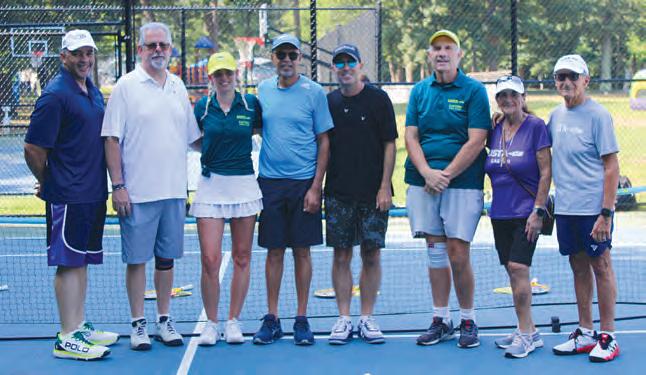
Want to see photos from tonight’s awards or from past dinners? Need more information on our fabulous honorees and past awardees? Inspired to nominate someone for an award for next year? Visit www.longisland.usta.com for all you need to know about our Long Island Regional Awards Dinners from past to present!!
Mike Pavlides, Regional Director
Jonathan Klee, Past Regional Director
Sunny Fishkind
Tito Perez
Jason Wass
Randi Wilkins
Scott Axler
Shannon Blue
Kevin Boston-Hill
Hilary Bressler
Henry Chiu
Jackie Clark
Dunja Froman
Stephen Green
Herb Harris
KerriAnn Jannotte
Karen Jones
Jason Pasion
Sharon Rappaport
Fabiana Rezak
Clark D. Ruiz II
David Sickmen
Michelle Stoerback
Jacki Binder, Newsletter Editor
Neil Thakur, Manager, Schools Tennis and Long Island Region Community Tennis Coordinator
Milly Keighery & Becky Bellino, USTA Eastern Long Island Leagues Coordinator(s)
www.LongIsland.USTA.com Facebook: Play Tennis Long Island Instagram: usta_eastern ustaonlongisland@gmail.com
to All Award Winners from The USTA Eastern Long Island Region’s 35th Annual Awards Ceremony


Maureen, you have been an anchor in the tennis community for so many years, and you couldn't be more deser ving of this award. Your leadership, dedication and unwavering love for tennis has had a profound and lasting impact on the sport in the region, and you embody the very spirit of the Hy Zausner Lifetime Achievement Award.
From Marc Kemp (Point Set owner), Lori Sarnelli (Club Manager) and your entire Point Set family
to All Award Winners from The USTA Eastern Long Island Region’s 35th Annual Awards Ceremony

Congrats to the Sectional Champions out of Point Set captained by Laura Crain! Keep up the great work ladies!
Lohit and Marcus, congrats on an incredible accomplishment. Proud to be your coach!
-Coach Steve Ferrantello
Congrats to the 18 & Over 4.0 Men team captained by Stephen Weiss & Neil Hyman on winning the Sectional Championships!
Congratulations Anna Bielen Zarska
USTA Eastern Tennis Junior Professional of the Year
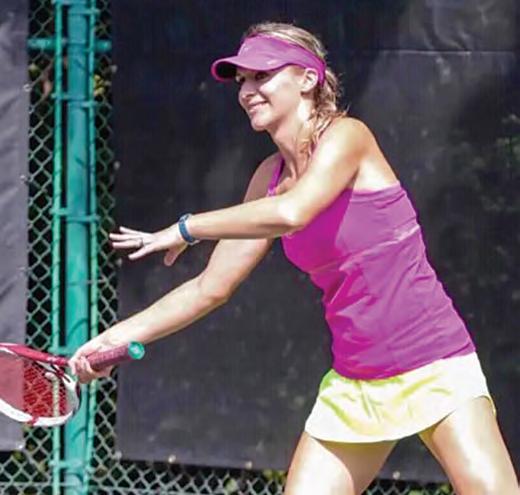

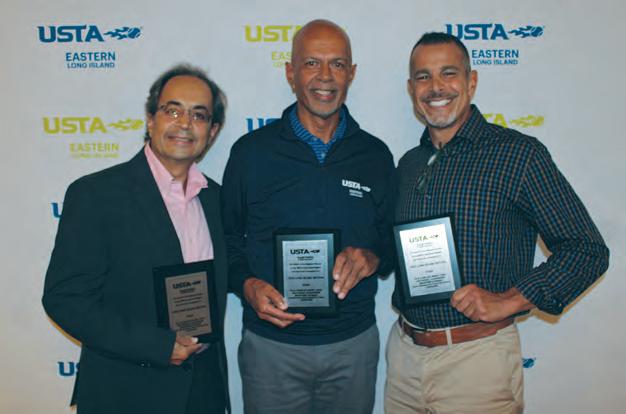
Thesport of tennis continues to grow and thrive throughout the country, and that is especially true here on Long Island. While we have seen the rise of other racquet and paddle sports during this time, tennis maintains its place as the world’s most popular racquet sport. From the health benefits to the camaraderie it can provide, as well as the life skills it helps foster, the benefits of tennis are immense.
At the heart of the sport’s growth here in our communities is the work done by USTA Eastern, the governing body of tennis in our area. The 2025 U.S. Open earlier this summer saw a record number of people come out for tennis, and once again USTA Eastern provided hundreds of juniors the opportunity to go on court prior to matches, one of the many unique initiatives conducted by

Eastern to inspire kids to play tennis. Neil Thakur is USTA Eastern’s Schools Manager and Community Tennis Coordinator for the Long Island and Metro Region, and is integral in organizing those pre-match clinics during the U.S. Open, as well as the many year-round programs that help grow tennis.
One of USTA Eastern’s goals in 2025 was to collaborate with more providers and organizations. How were you able to do that this year?
We held meetings in our regions where we hosted our stakeholders and presented some of the new initiatives that the USTA has launched. We used these meetings as an opportunity to listen and learn what they needed from

us. We also sent out surveys to club owners and managers to learn more about what they are doing and how we can support them to achieve their goals. It is important for the industry to work together and collaborate wherever possible in order to sustain our growth.
I know Red Ball for Adults has been a priority, how have you seen those programs/initiatives grow, and how are you and USTA Eastern doing more to expand on those?
Yes, Red Ball for all ages is one of our top priorities. We have been expanding the game and it was also highlighted at the US Open. We want it to be seen as a social game as well as an entry point for those who want to learn tennis quickly and easily. The beauty of Red Ball tennis is that it can be played anywhere, tennis courts are not required. Even on a pickleball court!
Were you able to bring tennis into more schools this year?
How do you plan to continue to expand on that mission?
We have had steady growth in our school tennis program. I feel the best way to continue to expand the program is to connect our local clubs and community tennis associations to schools. This could include bringing them in to help with teaching tennis in PE classes or organizing after school programs. This is also a great way for them to gain new players for their own programs because many of these school
students and their parents will want to learn beyond what is offered in the school environment.
What have you learned about the LI Tennis community through all these years?
The LI tennis community is a very diverse one. There are many people playing at private clubs, parks and school courts. However, there are also many communities that do not have access to tennis for economic reasons. We want to grow the game in these areas by providing play opportunities and connecting them with providers who are willing to work with them. Compared to other regions, Long Island is definitely a robust tennis community but there is still plenty of room for continued growth.
Between Park Day, and the Kids Day events, among others, the LI Tennis community does a lot of work to grow the sport and expand its reach. Is that unique to LI do you think? What can other regions in the section learn from the success of these events?
Yes, many of the events that take place on Long Island are very unique. We have a very active regional council made up of enthusiastic volunteers who

support these activities and events. Each region has a different geographical makeup and demographics so it may be difficult to duplicate what LI does elsewhere.
On a personal level, what do you enjoy most about your job, and what keeps you motivated to keep doing the work?
I consider myself very lucky to have the job that I have and I know that it has changed my life. Everyday is exciting and new because there are so many different opportunities to grow a game that I love. I have made great connections with so many people in the industry and they are always ready to support me and likewise they know that I’m a trusted resource for them. It is always rewarding to meet a parent or a player who has benefitted
OCTOBER 2025 - MAY 2026
from some of our programs over the years and see how something I have done has made such an impact on their life. I also have the privilege to work at the US Open every year which is always the most exciting time of the year for any tennis player.
As we move towards the end of 2025 and head into 2026, what are some of your goals as the Community Tennis Coordinator?

I would like to help grow our existing community tennis organizations and also find new areas to introduce tennis. Implementing our program into Long Island schools has always been a challenge since every school district operates differently so that is always a goal every year. I would like to increase more social play for those who are not looking for competitive tennis but a healthy activity. I am also involved with USTA Coaching so holding more workshops and showing that coaching is a very good career path for someone still trying to figure out what to do after high school or college. I would also like to ensure that everyone knows about all the resources available from the USTA and take advantage of them since we are a non-profit and our mission is to “grow tennis to inspire healthier people and communities everywhere”.


It’s hard to believe, but it is almost that time of year. As we move deeper into winter, the holiday season is fast approaching. Don’t let it sneak up on you and Long Island Tennis Magazine has you covered.
We’ve compiled some excellent gift ideas for the tennis and pickleball lover in your life, taking a look at different types of items from accessories, bags, books and clothes, and where to find them!
Retro Chic. Performance Peak


The Love All Tennis Visor is the finishing touch to your perfect court look, effortlessly balancing vintage style with modern performance. Inspired by classic tennis icons of the 1970s, our visor channels timeless elegance with a contemporary twist. Lightweight, breathable, and built for movement, it’s a must-have accessory for sunny matches, long rallies, or a coffee run after your morning game.
Made from high-performance cotton twill, the visor keeps you cool and comfortable even on the hottest days. The wide brim offers UPF 50+ protection and just the right amount of structure to shield your eyes without blocking your view of the ball. The sweatband absorbs moisture while maintaining comfort during play, and the adjustable back strap ensures a secure yet gentle fit for every head shape. Like every Love All piece, the visor was designed to fit beautifully and function flawlessly, because we believe performance should never come at the expense of style.
The design reflects our brand’s signature retro aesthetic: crisp white with contrast trim in Love All’s signature red. The embroidered Love All logo brings a playful, nostalgic touch that nods to the golden age of tennis fashion — when sport met sophistication. Whether paired with your favorite Love All dress or worn with jeans and a tee, this visor embodies our court-to-café versatility and easy, polished charm.
It’s more than an accessory; it’s a statement. A celebration of the women who love the game, live the lifestyle, and appreciate the beauty of sport. Perfect for players, spectators, and everyone who believes that loving the game starts with loving how you feel on the court.
Each visor comes in eco-friendly packaging and makes an ideal gift for any tennis lover — practical, stylish, and full of personality. Add it to your holiday list or gift it to your doubles partner as a chic reminder that the best part of the game is that we Love All. Learn more and search Love All Tennis products by visiting www.LoveAllTennis.com or contacting love@lovealltennis.com.


inPhorm NYC, renowned for its “simple elegance and classic” activewear for tennis, pickleball, and golf, introduces a striking new addition to its Holiday 2025 collection: bold and festive pattern.

Welcome the holidays with their stunning new limited edition collection featuring vibrant red and black patterns designed to capture the festive spirit. This season's must-have pieces showcase bold, eyecatching prints that radiate confidence and holiday cheer, perfectly balanced with sophisticated black solid staples.
inPhorm’s Holiday Collection seamlessly blends celebration with versatility. The striking red and black patterns bring energy and seasonal flair to your active wardrobe, while their classic black pieces provide elegant, timeless foundations that transition effortlessly from court to social gatherings.
Mix, match, and make a statement – pair bold patterned tops with sleek black bottoms for a look that's both festive and refined, or go all-in with coordinating sets that command attention. Each piece is designed with the same performance features you expect from inPhorm NYC: moisture-wicking fabrics, flattering fits, and that perfect blend of style and function.
Whether you're on the court, at holiday gatherings, or simply embracing the season's energy, this collection ensures you look and feel your absolute best. Embrace the boldness of the holidays while maintaining the sophisticated elegance that defines your style.
Explore “inPhorm Holiday” collection that is launching in late November to see the full range of stylish and functional activewear at www.inphormnyc.com.


The Thrive Societe Off the Shoulder Textured Pullover from 40 Love Lifestyle is the perfect combination of stylish, classy and comfortable.
From the studio to the courts, this pullover is made in a new textured stripe terry and pairs perfectly with the Rib Inset Textured Short for an outfit that will be the envy of the country club.
Made from 76 percent cotton, 23 percent polyester and 1 percent spandex, the Off the Shoulder Textured Pullover is one of many stylish offerings from 40 Love Lifestyle, located at 439 Pandome Road in Manhasset, this holiday season.
Check out this, and all of its offerings, from tennis, pickleball and padel outfits, to accessories and bags, by visiting 40LoveLifestyle.com, calling (516) 570-0781 or e-mailing info@40LoveLifestyle.com.

• Hold up to 6 paddles
• Adjustable shoulder straps
• Built in cell phone, key storage
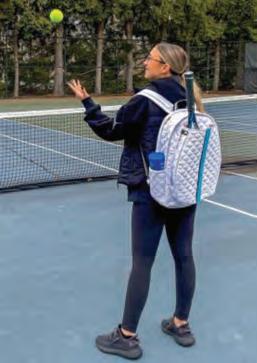
• Side water bottle holder
• Machine washable

The Pickleball Bag/Travel Bag from SassyLi is a machine washable, large compartments, Removable pouch padded, Crossbody strap, cell phone pocket, water bottle holder.
This bag is large enough to carry six pickleball paddles, and is made of a special light weight and durable material, and comes in fuschia and black colors.
The main compartment offers more than enough space for pickleballs, golf shoes, tennis shoes, etc as well as built-in pockets for keys, cell phones, and the side water bottle holder.
The adjustable strap allows you to wear the bag tight or loose.
• Holds tennis shoes, golf shoes, pickleball shoes
Sassy Li has a Holiday Sale going on, and not only this bag, but all bags, are $50 for the entire month of December. Visit SassyLI.com, or contact Lisafuchs559@gmail.com or (888) 808-3664 to see more!
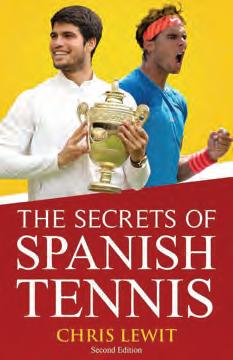

The much anticipated follow-up to Chris The Secrets of Spanish Tennis, is now here and available on Amazon.
The Secrets of Spanish 2.0 is a comprehensive update to Lewit’s initial release 10 years ago, featuring 45 Spanish tennis drills with detailed explanations that are supplemented by videos on Lewit’s YouTube channel (YouTube.com/chrislewit).
The book features forewords by legendary Spanish coaches Emilio Sanchez and Luis Bruguera, and this edition also includes a new chapter on Toni Nadal and other famous Spanish tennis coaches, a new chapter on the rise of Carlos Alcaraz, and an updated chapter detailing the top Spanish academies.
“Spain has dominated the world rankings on the ATP tour for many decades, a phenomenal accomplishment for such a small country,” says Lewit. “Spain is now positioned as the leading destination in the world for serious tennis players looking to train for the elite junior and professional tours.”
Over the course of 20 years and dozens of study trips, Lewit visited the leading Spanish academies and studied and interviewed some of the most legendary coaches in Spain to discern and distill their unique and

special training methodology. Now you can learn the Spanish way of training and use it to make yourself, your kids, or your students better!
Chris Lewit is a former #1 for Cornell and pro circuit player, best-selling author, educator, and one of the top junior coaches in the United States. He is a contributing editor for TennisPlayer magazine, Long Island Tennis Magazine, New York Tennis Magazine and the author of The Tennis Technique Bible. Born and raised in New York City, he now splits his time between New York City and Manchester, Vermont. He develops players in the NYC area and also at his high performance tennis training center in Manchester, Vermont.
The book is available in paperback on Amazon and in bookstores, and makes a great gift for the tennis fan in your life this holiday season!
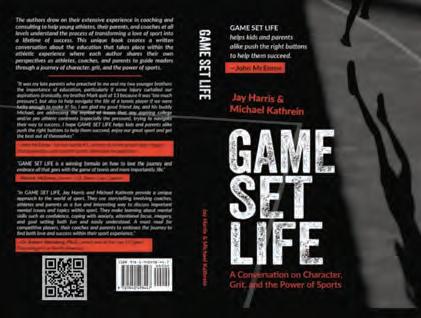

The newly published book Game Set Life: A Conversation on Character, Grit, and the Power of Sports gets at the heart of how we can use sports, and tennis specifically, to do just that. Written by two long-time coaches and fathers, Jay Harris and Michael Kathrein, this book is a powerful conversation about the education
embedded within athletics. Through real stories, honest reflections, and meaningful insights, you’ll discover how to use sports as a vehicle for developing character, leadership, and a strong athlete mindset.
Whether you are a parent, coach, or mentor, you’ll walk away with the tools and perspective to help kids thrive—on and off the court. “The most important sentiment in the book is the thought that sport DOES build character,” says Harris. “We all get very wrapped up in wins and losses, and when that happens, we forget about what is actually important: the process of it all. Think of a weekend tennis tournament, where only one player finishes the weekend without losing. That means all of the other players lost at least one match. With that set up, we better all stay focused on the process, otherwise there are going to be a ton of very unhappy parents, coaches and players.”
Within the book you’ll learn how to:
• Develop character and emotional resilience in young athletes
• Help kids build a personal growth mindset and mental toughness
• Support athlete development for teens without burnout or pressure
• Shift the focus from performance to purpose—and connection
• Recognize the life lessons sports are always teaching
This book makes the ideal gift, whether you are a player, coach or parent, was the number one sports psychology book on Amazon in its first week release. The book is now available on Amazon, and many other bookstores, and makes a great stocking stuffer.






































































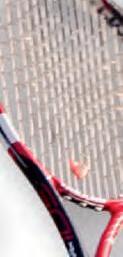







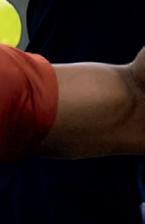
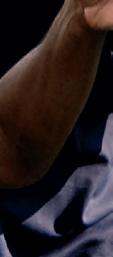















































































































































































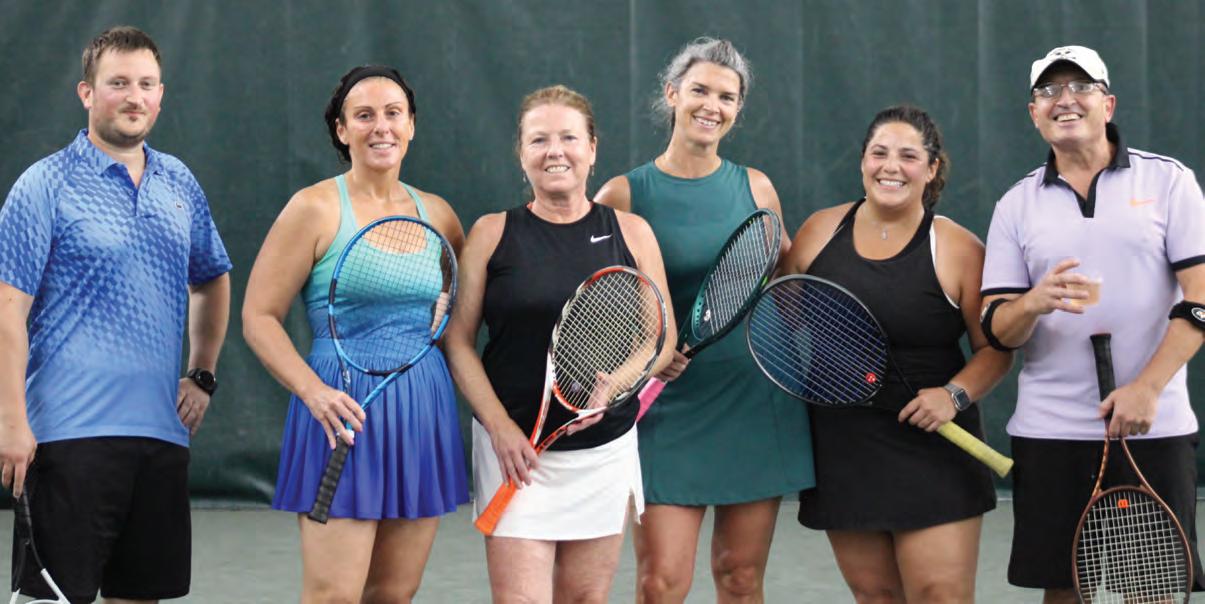
When Long Island Tennis Magazine launched its Courts & Cocktails event series in 2021, the goal was to not only use them as a way to raise money for various charities, but also provide a fun tennis event that motivates adult players to play more themselves.
That was the case this fall as players came out to partake in the latest Courts & Cocktails at SPORTIME Syosset.
"The large turnout and feedback from our Courts & Cocktails events continue to reinforce the need for social tennis options and professionally-run events in this area,” said David Sickmen, Publisher of Long Island Tennis Magazine. “We love being in the community and bringing players of all different levels together. The events have been very popular with adults looking to get away from the monotony of typical Saturday night





plans and have a more active weekend evening where they can meet new people or spend time with friends.”
The players are broken up into multiple courts, all of which are run by a different teaching professional. All the while, music is playing, and drinks are being served, as we create a fun and lively atmosphere combining tennis action with a social feel.
The tennis play is level-based, and is designed to make all players feel comfortable, while sharing a good time with their spouses or friends, and also provide a great opportunity to meet new players as well.
The events serve as a way to benefit all aspects of the tennis community, from providing more work opportunities for the teaching pros, to helping fill vacant court time at the host clubs, and reinforcing the players’ passion for tennis, which leads to them playing more outside of Courts & Cocktails events.
“Courts and cocktails is an all around fun night! “ said Steffi Hochhauser. “I’ve met many new

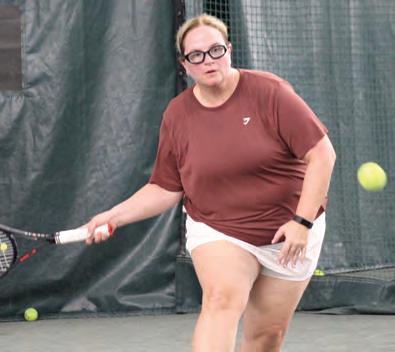
people who I would not have otherwise met. It also gives me another type of excuse to play tennis! And after all, who doesn’t want that!”
At the end of the tennis portion of the night, an expansive catered dinner spread is put out for the players to enjoy, wrapping up the event with great food, drinks and people.
We are looking forward to continuing this mission to provide exciting playing opportunities all while raising money to benefit the community.
“Our events are well run and showcase all we love about tennis, from the competitiveness to the social side and the fun both on and off the court with like-minded people,” Sickmen added. “And we embrace using these events as a way to fundraise and partner with

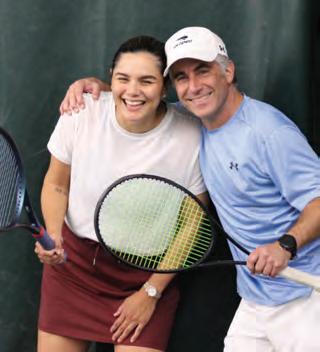
multiple charitable organizations.”
Be sure to check out LITennisMag.com for information on future Courts & Cocktails events.

Our complete 2026 schedule will be available shortly, and we look forward to seeing you on the courts!



Earlierthis year, Kathy Miller retired from her post as the General Manager of Carefree Racquet Club in Merrick after xx years. A staple of not just the club, but also the broader Long Island tennis community, Miller’s exit left a void.
But fortunately, that void is being filled by new General Manager Kristen Cassidy, someone who also has great passion for the sport of tennis, as well as caring deeply about Carefree.
By Brian Coleman
Cassidy grew up playing tennis at Carefree, and began working there five years ago after she finished playing collegiately at Moravian University. While a collegiate player, Cassidy’s team won the Landmark Conference in her sophomore and season seasons while making it to the second round of the NCAA Tournament in both of those seasons. She served as team captain in both her junior and senior years, which elevated her into a leadership role for the first time in her life, which helped prepare her for her professional career.
She served as the League Director and a part-time Teaching Professional, while also ushering in a new 10-and-under
camp during the summers. She ultimately worked her way up to Assistant General Manager, with aspirations of doing more.
“From the beginning, Kathy and I have always had a great relationship. She’s someone who has always been a mentor for me, and I’ve looked up to and respected her,” said Cassidy. “When she first announced her retirement, this position was something I inquired about. It was ultimately given to someone else first, but I think everything
happens for a reason. And from my perspective, I am the most ready I have ever been to take this on now. Kathy has been a huge help for me, she offers her support and will continue to do so while I navigate this new role and get more and more acclimated.”
Stepping into this new role presents challenges, and Cassidy is now in charge of a lot of the day-today responsibilities that come with operating not just tennis programming and leagues, but all the off the court aspects affiliated with running a business.
“I’ve observed a lot over the years, and learned how to deal with things that come up, something as ‘simple’ as an air conditioning issue, or a plumbing issue, stuff like that,” said Cassidy. “I saw how they dealt with those issues, and realized I needed to know things like, ‘Who do I call? How do I get this resolved? What happens when the customers come in the next day?’ So I learned how to respond quickly, and made sure to be on top of those things. That helped earlier this summer when a really bad rainstorm caused a small flood in our ball room, and I had to drive to Carefree to help our


maintenance staff vacuum the excess water and dry the courts so people could continue playing.”
Cassidy has the full support of Miller, who is still at the club every so often to offer any guidance that she may need:
“It’s been a true joy watching Kristen grow from a student in Carefree’s Junior Program to running our club leagues, and now stepping into her new role as Club Manager. Her journey is a testament to hard work, dedication, and a genuine love for the tennis community,” Miller said. “Kristen’s friendly and personable nature make her a favorite among both staff and customers. She’s embraced every challenge and is quickly mastering all aspects of club management. I have no doubt that Kristen will continue to thrive and lead with excellence for many years to come.”

grandfather, Brion.
In addition to her role as the General Manager of Carefree, Cassidy is also a collegiate tennis coach. She served as the Head Coach of the Molloy women’s team, and when the university announced the program was being dissolved, she joined the staff at Farmingdale State.
“While Carefree is my priority, the coaches at Farmingdale [Head Coach Adam Waterhouse and Associate Head Coach Richard Hume] have been incredibly understanding and supportive with my taking on this role. They provide me with any flexibility I may need, and so far it’s worked out great” Cassidy explains. “With my responsibilities here [at Carefree], it’s great to be able to keep coaching, because it’s something I really fell in love with and found enriching. I’m able to connect with these kids, and I’m really grateful for the opportunity to continue doing that.”
Taking on all of these different roles may seem daunting, but being around tennis is something Cassidy has embraced ever since she first picked up a racquet at the age of 11, and really stems from her relationship with her
While her dad learned how to play so he could hit with her as she got older, her main tennis coach was her grandfather.
“He was such a smart person, and was so invested in my tennis career, so he did a lot of research in picking out the perfect racquet, or what he thought was the perfect racquet, for me,” she recalls. “He actually converted me to
being a left-handed player, even though I grew up right-handed. He was the one who would be on the courts with me six to seven days a week growing up, and was definitely the most influential tennis figure in my life.”
Unfortunately, Brion passed away two years ago, but the mark he left on his granddaughter remains, and provides a huge source of inspiration for Cassidy as she continues to elevate her position in the tennis industry here on Long Island.
“I know that he would’ve really loved watching me grow into this career at Carefree, and would’ve been so invested in my college coaching career. He would’ve offered to do all the recruiting for me for free, because he just really loved that sort of stuff,” she says. “Tennis was one of our major connections, and I miss him very much. I attribute a lot of my love for tennis to him, and dedicate all that I do to him.”
All of that has led to Cassidy taking the reins at one of Long Island’s longestrunning tennis clubs. She does not take that lightly, and understands the position she is in, and is excited to not just maintain the legacy left behind by her


continued from page 37
predecessor, but also leave her own mark.
“I would be lucky to have a career as long and as successful as hers, and to not just continue the great work she has done, but also have my own accomplishments, and leave my own legacy,” she said. “Carefree is somewhere I have been since I was a kid. I live right up the road in Wantagh, and I’ve been coming here since I was a little girl playing junior team tennis with Danny Burgess Sr., who we all continue to miss dearly.”
Between playing there as a youngster and working there in her professional life, Cassidy knows the role Carefree plays in the tennis community.
“I always perceived Carefree to be a tennis club for everyone. From young kids to adults of all ages, there’s an opportunity for everyone at any stage in
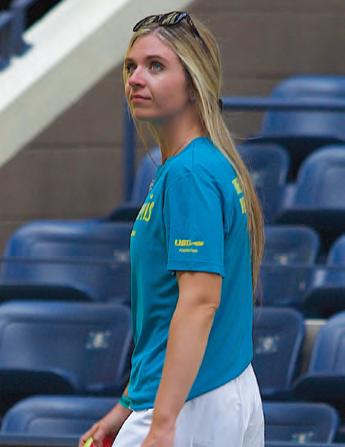
their tennis career, whether you are a beginner, someone in your 30s looking for a game, and we even have ladies in their 80s and 90s playing on our

seasonal courts,” Cassidy added. “Our staff is amazing. Ben [Marks] runs a very successful junior program, and Alina [Volman] is now running our adult learnand-play and doing a great job with that. Our entire staff is great, from the pros, to the front desk and my assistant manager Robin Vereen and the maintenance staff, we are definitely a team here.
I want people to feel like they can walk in and find their tennis home, whether it’s a lesson, a league or a group of people that makes them enjoy being on the court. That’s how I always saw Carefree, and in this new role, I’m excited to make sure I provide our customers with a similar experience and feeling. I really love Carefree, and who better to look after something, than someone that loves the thing they are looking after.”



By Dr. Tom Ferraro
Everyera has a small group of heroes or what are called impact champions. These are the players that become household names and capture the hearts of tennis fans. Back in the 1960’s it was Arthur Ashe and Rod Laver.
The 80’s had John McEnroe and Jimmy Connors competing against the “Iceman” Bjorn Borg. In the 1990’s we saw Pete Sampras and Andre Agassi emerge as the next set of super heroes. From 2000 through 2020, we saw Roger Federer, Rafael Nadal and Novak Djokovic win nearly all the Grand Slams. But as these three superstars began to fade the tennis world wondered who would come along to replace them.
Anyone who had the pleasure to witness this year’s U.S. Open was witness to the emergence of this era’s heroes. In the finals we got to see a bleached blonde Carlo Alcaraz face off against Jannik Sinner. At long last, a new set of stars.
The women’s side of tennis also goes through these changes. Back in the 1960’s we had Billie Jean King quickly followed by Chris Evert and Martina Navratilova. Then in the 1990’s came Steffi Graf and Monica Seles. By the turn of the century, we saw the Williams sisters mesmerize the world of tennis and grab hold of Grand Slam titles.
But in case you harbor fantasies that you too would like to become the next tennis hero, let me warn you. All is not well in the world of the super hero. The current era of tennis is best characterized as pathologically stressful and anxiety laden. To sight proof of this new way in tennis you need to only observe the rise and fall of Naomi Osaka who was world number one at age 21 and had a psychological breakdown for all the world to witness.
We can now see the stress and aberrant behavior building in Carlos Alcaraz who went from a young media darling a mere two years ago, to a volatile in your face bleach-blonde screamer in this year’s Open.

I think the ½ life of today’s tennis hero has shrunk dramatically. We can see how the tennis world has morphed from a genteel game filled with etiquette and manners into a sport of angry screamers. One can understand how all this happened. The money involved means that tennis is a highstakes affair where anything goes.
As an example of the increase in purses, Arthur Ashe made a little over $1,000,000 in his pro career. Contrast this with Jannik Sinner who has already made $50,000,000. So today’s super stars make about 50 times what they once did.
And the cost of these kinds of incomes can be summed up in one way. These players will have much shorter careers than in the past. So make sure you enjoy these stars today because tomorrow it is unlikely that they will be around. Nadal won 24 majors and his career lasted 23 years. Federer won 20 majors and his lasted 24 years. I am willing to bet anyone that Alcaraz and Sinner will not come close to winning even ten majors apiece and their careers will be very brief.

And if you don’t believe me, just ask Naomi Osaka to explain.
Tennis is not the only sedate sport to be corrupted by money. The bizarre spectacle at this year’s Ryder Cup in golf is another example of the way money can contaminate players and fans alike. Vulgarities and four letter worlds were shouted back and forth between players and fans all week long. Daily ground passes cost over $1,000 a piece and the beer flowed freely. If things continue to progress as they are, get ready for heroes with short careers and athletes who have emotional breakdowns.
That is good news for sport psychologists, psychiatrists and hospitals but bad news for fans and the athletes that collapse and disappear before we can ever get to know them. And if you don’t think longevity matters take a gander at horse racing. My family has been a part of that sport for three generations and I have witnessed its slow decline. And the reason is simple enough. If you have a good three-yearold who happens to win a Triple Crown Race, you immediately put him out to stud where you make a fortune in stud fees. You do not risk injury and breakdowns by racing them. In the long run this has ruined the sport since the public never gets a chance to grow familiar with and to fall in love with the animal. Long gone are the names like Secretariat or Seattle Slew.
This is what may slowly occur in tennis as well. The big name players will make huge money for a few years and either due to injury, emotional breakdown or the realization that they have already made $100 million, they will retire young and the fan is left with the challenge of getting to know yet another young hero. I would say that the half life of the hero is now about five to seven years, and it’s all downhill from there.


By Brian Coleman
Theold cliche says that if you love what you do, you’ll never work a day in your life. For more than two decades, Lori Sarnelli has lived that cliche, as she has been an integral member of the team at Point Set Tennis, one of the pillars of the Long Island tennis community, and located in Oceanside. In September, Sarnelli celebrated her 25th anniversary at Point Set, where she now serves as the club’s General Manager.
“I enjoy the people I am lucky to work with every day,” said Sarnelli. “I think I have a special bond with each of them. I enjoy spending time chatting with our clients and making new friends. There is a sense of
camaraderie, and a sense of being home when you walk through that door, and I love the feel of that.”
Sarnelli’s journey at Point Set began at the turn of the century, and remains a moment that is etched in her mind forever.
“I remember the day like it was yesterday,” she recalls. “I was a stayat-home mom, and a friend of mine worked in the pro shop at Point Set. Both of us had boys just beginning third grade, and my daughter was entering kindergarten. She mentioned that the managing partner needed an assistant, so I met with him (Dan Dwyer) and decided to work part-time around my kid’s schedule.”
Dan Dwyer ended up serving as a
great mentor for Sarnelli in many ways and he was also the person who gave her that first tennis lesson, that was the gateway of her catching the tennis bug. Soon after, she was captaining USTA Adult League teams, and in 2019 she led one of those teams to the National Championship. Dwyer sadly passed away back in 2010, but left an indelible mark on not only Point Set, but Sarnelli as well.
“Dan was a great mentor and became someone I could trust and lean on,” she said. “When my daughter was diagnosed with Type 1 diabetes, he was so supportive even when I told him I needed to stop working. I took some time off, while always checking in, and once we had a handle at home
I was back at work. My husband Vinny used to tease me about working at a tennis club, but I found a love for tennis, and a support system that has molded me to who I am today. When Dan passed away in 2010, I then realized that I was there for a reason, and it’s been 15-years since then that I have been the GM.”
And during that time Sarnelli has maintained the familial feel and continued the home environment that Point Set takes very seriously. With the help of a supportive and encouraging ownership team, plus a staff around her that makes her job easier on a day-to-day basis.

honored, she is quick to give credit to those around her.
As a result of her dedication throughout these years, Sarnelli was honored with the Vitas Gerulaitis “For The Love of Tennis” Award at the USTA Long Island Region Awards Ceremony back in 2021, an award that recognizes individuals who show a deep passion for the game by supporting tennis programs, volunteering, and working to grow tennis on Long Island.
And while Sarnelli was the one
“You know how the saying goes, it takes a village. And I would not be where I am today without my Point Set family,” she said. “I am grateful for the owners, Marc Kemp in particular, and their commitment to updating the club and giving me the tools I need to make Point Set feel like a home for so many people.”
In talking about some of those people at Point Set, Sarnelli continued:
“Marc gave me a chance, trusted me and let me learn and grow along the way. Tonny [van de Pieterman], always my go to and my greatest



cheerleader here at Point Set. When Dan passed away, we joined forces, made some changes and spit in the wind. Luckily, the ball was in our court, and we aced it! Our team has been the rock from the beginning.
Tonny, along with Nadia [Johnston], David [Nisenson] and Claudio [Eulau] have been my balance beam. We have all worked together as a team for well over 10 years, and I honestly feel like we are family. When you have great people around you, they make you look good.”
Sarnelli has been at the forefront of making key decisions over the years to allow Point Set to remain a staple of LI tennis. One of those came a little more than 10 years ago when the famed Rockville Racquet Club closed down, and as a result Maureen McFadzen moved her ladies’ league operation over to Point Set.
“We were blessed with inheriting Maureen and the women’s tennis
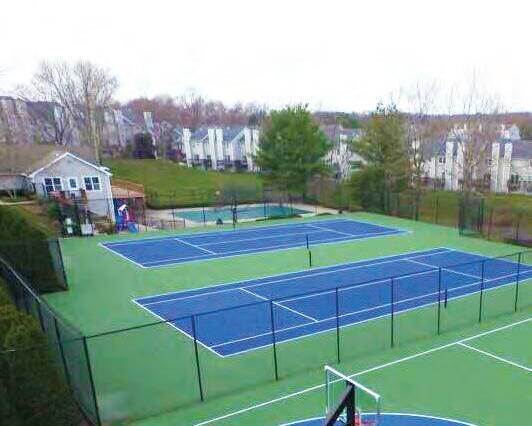
continued from page 41
leagues she organized. Since 2013 Maureen has been the backbone of our ladies’ leagues.”
Those decisions also included renovations and upgrades to the club’s infrastructure after Hurricane Sandy decimated our area, especially on the south shore, as well as the COVID-19 pandemic a few years ago.
“We’ve had some ups and downs but somehow we have always figured out how to push forward,” Sarnelli says. “Sandy was a tough one, and we were so lucky to have the ownership’s commitment in upgrading the club and the team that stuck it out with us. Then the pandemic happened. That was such an uneasy, scary time for us all but we came back better than before!”
However, the biggest challenge Sarnelli faced didn’t have to do with
anything on the court or club business. In 2010, just months after Dwyer’s passing, Sarnelli became sick, which ushered in some of the most trying years of her life.
“It was a very tough year for me, but with the love and support from Marc, Tonny, Nadia and the rest of my work family, I pushed through,” she recalls. “I ended up gravely sick once again in 2014, and that was the most difficult time I have faced. The support that I received from my work family, my tennis friends, and the tennis community overall gave me hope, and a sense of comfort. I was able to work through some really difficult times because of the love and support from all, and from my own loving and supportive family.”
For 25 years, Sarnelli has been
the face of Point Set tennis, and helped not just maintain but elevate the club’s standing in the Long Island tennis community. A lot of things happen, and changes occur during a long period of time, and it takes a special person in order to navigate all the challenges life throws.
As Sarnelli prepares to enter her 26th year at Point Set, she is still as energized and enthusiastic as ever, and is excited for what lies ahead.
“I am looking forward to more time on the tennis court with friends, welcoming fresh faces, and staying active through the game that’s become a lifelong passion,” Sarnelli said. “Each season brings new challenges and memories, and it’s exciting to keep learning, and enjoying the camaraderie that makes the club feel like a second home.”



By Tonny van de Pieterman

Whenever someone says, “I only play for fun”, I take notice. Are they implying that tennis has little or no meaning to them? Are they saying that the time and money spent on tennis has no value to them, other than some fleeting moments of fun?
Could it be that the person proclaiming they are “only playing for fun” is really warning you not to have any expectations of them? I often sense fear of failure…or worse.
Expectations manifest as pressure in the mind, and for some people, that can be intolerably painful. The expectations we have of ourselves are often out of awareness, but they voice themselves through our own ruthless inner critic.
Whenever I notice someone being very self-critical, I know they are not living up to their own inner standards; the fantasy they have of themselves. No wonder they don’t want another person telling them what they are doing wrong. An opponent beating her would be that type of person; a coach with “constructive” criticism would be another. For a person with a vicious
inner critic, these people would morph into authority figures, and that’s no fun!
The person that insists that tennis is only a game has an internal “fun police officer” in their head that makes sure they are not having too much fun.
If you are one of these people, here is my effort to throw you a lifeline to help make tennis more meaningful because in my view: Tennis = Life!
Make your tennis lesson or experience a safe haven, an escape from your busy mind into the reality of the moment. Some people meditate sitting on a pillow with their legs crossed, you can arrive in higher spheres by focusing on your consistency. Repetitive stroke production and counting your rally shots are both excellent ways to get into the zone.
Learn something! Master a skill. After years of being bashed by your inner critic you might not think you

can learn, but you are not an alien! Let a teaching pro break down a skill to its core like they were teaching it to a five-year-old. I guarantee that gradually you will get better to re-discover your human growth potential.
Progress=Happiness!
Let tennis be your therapy! Let the game reveal to you where you are not free yet. If you get triggered, nervous, or frustrated, that is wonderful information for journaling, some introspection, and a chance to learn from it. If you are suffering yourself on the court, you are likely suffering yourself in other parts of life. Learn some resilience within the safe space of a tennis court. Grow up and prosper!
When you become a better winner AND a better loser, through your lessons on the court, you will have become a more loving and mature individual, and we can all use more of those!
Tonny van de Pieterman is a tennis professional at Point Set Indoor Racquet Club in Oceanside, N.Y. He was previously named USTA Tennis Professional of the Year for the USTA/Eastern-Long Island Region. He may be reached by phone at (516) 536-2323 or email ahvdp14@hotmail.com.
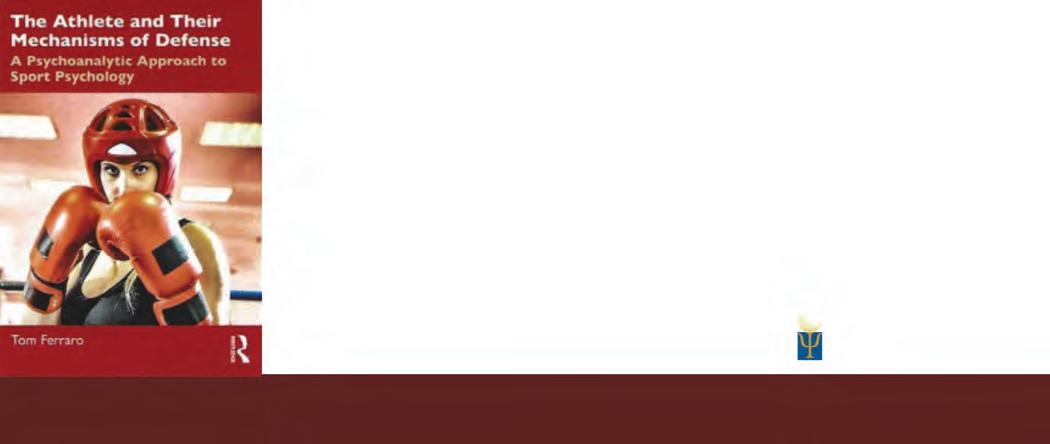



The local tennis community boasts some of the top coaches in the world, and with this wealth of talent available, Long Island Tennis Magazine took the opportunity to pick the brains of some of these coaches. These coaches share their thoughts on a wide variety of tennis topics and issues, ranging from junior tennis to the professional game.

Steve Annacone is a USPTA Elite Pro and the Director of Annacone Tennis, and MyHamptonsPro throughout the Hamptons, NY. Along with Gill Gross, Steve runs the TOP (Tennis Optimization Players-Top Team) program at the Tucson Jewish Community Center in Arizona.

Tawhid Choudhury is a tennis professional at the Nassau Tennis & Sports Center. He grew up playing in different programs in New York City, while competing in national and international ITF tournaments, before going on to play college tennis at Asa College in Miami.

Ricky Becker is The Director of Tennis at the Glen Oaks Club. He also coaches high- performance juniors throughout the year and has been the Director of Tennis at three of Long Island’s biggest junior programs. As a player, Becker was the Most Valuable Player for the 1996 NCAA Championship Stanford Tennis team and ranked in the top-five nationally as a junior.
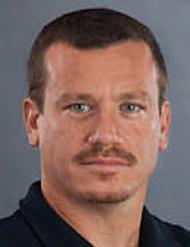
Adrian Chirici is a teaching professional at the Robbie Wagner’s Tournament Training Center. Chirici is a two-time USTA Coach of the Year, and is also a former USPTA National Touring Coach of the Year. He played collegiately at Fairleigh Dickinson University, and has been ranked number one in the Men’s 35-45 Age Group as a player.

Dale Evans is the Director of Tennis Operations at the Billie Jean King National Tennis Center. Originally from Oakland, CA, he is a 2-time tennis industry national award winner and 2-time national coaching champion who has spoken at several conferences and USPTA World Conferences. After playing collegiate tennis at Jackson State University (MS), he has spent an extensive amount of time coaching players and leading high-performing teams throughout the tennis industry. He holds a B.S. in Management and M.S. in Sports Management and certifications from USPTA, PTR, Academia De SanchezCasal, and IPTPA.

Ken Feuer is the Associate Director at the John McEnroe Tennis Academy Long Island. He played for the University of Nebraska where he Won Big 8 titles in both #4 singles and #1 doubles. Ken is also the former head pro and interim tennis director at Shelter Rock Tennis and Country Club in Manhasset, NY. After serving as Vice President in his family business for several years in New Orleans, he relocated to Scottsdale, Arizona where he formed his own academy working with adults, ATP/WTA players and high performance juniors. Ken joined JMTA Long Island as Director of Player Development the summer of 2019.

Steve Kaplan is the owner and managing director of Bethpage Park Tennis Center, as well as director emeritus of Lacoste Academy for New York City Parks Foundation, executive director and founder of Serve & Return Inc and co-director of The City Classic Junior Tennis Academy. Steve has coached more than 1,100 nationally- ranked junior players, 16 New York State high school champions, two NCAA Division 1 Singles Champions, and numerous highly-ranked touring professionals. In 2017, Steve was awarded the Hy Zausner Lifetime Achievement Award by the USTA.

Ed Krass coached the Harvard Women’s Tennis Team to four consecutive Ivy League titles from 1986-1990. Ed is the founder and director of the Annual College Tennis Exposure Camps, which are taught exclusively by all head college coaches for high school-aged players (15-18). Ed is also the founder of One-OnOne Doubles tournaments, which have been played at USTA, ATP, ITA and USPTA national events.
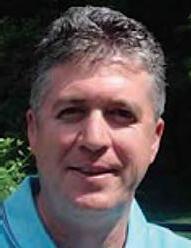
Salomon Levy is the CoDirector of Tennis at Christopher Morley Tennis. Levy is originally from Colombia where he served as coach and captain of the National teams. He attended the Wingate Institute for Sports Science in Israel, and has gone on to coach many
players who have played at the national and collegiate levels.

Chris Lewit is a former number one for Cornell and pro circuit player. He is a highperformance coach, educator, and the author of two bestselling books: The Secrets of Spanish Tennis and The Tennis Technique Bible. He has coached numerous top 10 nationally- ranked players and is known for his expertise in building the foundations of young prodigies. Chris coaches in NYC and yearround at his high performance tennis academy in Manchester, VT, where players can live and train the Spanish Way full- time or short-term.
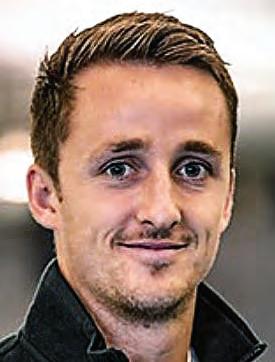
Ben Marks is Director of Junior Tennis at Carefree Racquet Club, and Director of Tennis at Cold Spring Harbor Beach Club. He previously worked at the John McEnroe Tennis Academy. He played number one and number two singles for Norfolk State University, and number one doubles—reaching a career-high regional ranking of ninth in the Atlantic Region. He is a 2015 National Open Doubles Champion. In 2018, he was named USTA Long Island’s Tennis Professional of the Year.
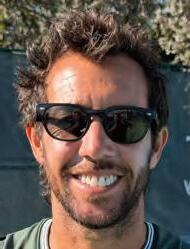
Reggie Moralejo is the Boys’ Program Director at the Ever t Tennis Academy in Boca Raton, Florida where he has been a coach since 2011. He previously served as the Director of Junior Player Development for the Sociedad Sportiva Tennis Club, and a head coach at the Bollettieri Tennis Academy. He played collegiately at the University of Hawaii where he played number one singles and was an Academic All-American.

David Nisenson is the director of junior development at Point Set Tennis. With more than 25 years of playing and coaching experience and an unmatched competitiveness, David has quickly become one of the driving forces behind Point Set’s junior development program.
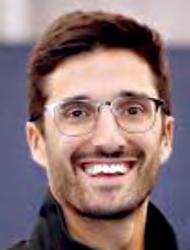

Tito Perez is the General Manager at Long Island Health & Racquet Setauket and Tennis Director at Game Set Match Tennis Academy. A native of Bolivia, Perez has been playing tennis for more than 40 years and coaching for more than 20, and is a mainstay in the LI tennis community. He served on the USTA Eastern Board of Directors, and is currently a USTA Long Island Committee Member.

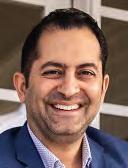
Dylan Roberts is a tennis teaching professional at Eastern Athletic Clubs in Blue Point. Roberts previously served as an assistant coach for the Hofstra University tennis teams, after a four-year collegiate career competing for Siena College.
Parsa Samii is currently a Real Estate Salesperson for Compass, and competed on the ATP Tour after a decorated collegiate career at the University of Massachusetts at Amherst. He is a USPTA High Performance Coach who has trained a number of topranked sectional and nationally-ranked players.
Ofir Solomon is the U10 Tennis Director and Adult Tennis Director for SPORTIME Port Washington/JMTA Long Island. played competitive tennis as a junior, achieving a top-20 ranking in the USTA Eastern Section and a top-150 ranking nationally. He attended John F. Kennedy High School, before playing collegiately at Fairfield University. He joined the JMTA team in 2017.
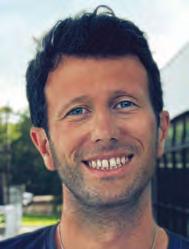
Edoardo Tessaro is a tennis coach at the Ross School Tennis Center. Born and raised in Italy, he competed internationally before attending Virginia Tech where he helped lead the Hokies to their best ranking in program history. He graduated in 2016 with an MS in nutrition and exercise, and then played on the professional tour. He previously worked as a sparring partner for top 600 WTA Italian player Martina Colmegna, as well as coaching many top junior players there.
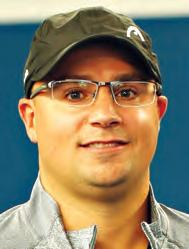
Jason Wass is the Director of Summer Programs at LuHi, a position he’s held since 2020. Wass also serves on the USTA Eastern Long Island Regional Council, and has been a tennis and camp director here on Long Island for more than a decade.
Mental health is an important topic that has been brought to the forefront of athletics recently. How often and how do you engage your players on their mental well-being, both on and off the court?
Kaplan: As a coach, I first recognize that while I can have a powerful impact on my student’s mental and emotional well being, I'm not a mental health professional and I must stay in my lane. As a result of this understanding, I stay grounded in assessing my students' behaviors. So, I teach and reinforce positive behaviors like confident posture, movement patterns and racket management as well as positive gestures, self talk and interactions. Performance is not always fully controllable, but accountability to non-performance behaviors is not only attainable, but a priority for peak performance.
Marks: My approach and feeling on this is that I am there as another branch of my players support systems whether they are juniors or adults. I am there to listen and to give advice where desired and I feel I can help with my own experiences. I am not a trained psychologist obviously, so I try to just be there and check in to see how everything is going in their daily lives and provide what support I can.
Nisenson: Mental health plays a huge role in tennis because it’s such an individual and mentally demanding sport. I make a point to check in with my players regularly — not just about their training or matches, but about how they’re feeling overall. Before or after practice, I’ll have short one-on-one conversations to see how they’re doing academically, socially, and emotionally. I also dedicate time to developing mental strength things like managing pressure, staying composed after mistakes, and maintaining confidence. I encourage players to be open about what’s stressing them, whether it’s performance related or something outside tennis.
Tessaro: Supporting our players’ mental well-being is woven into ever ything we do, both on and off the court. Coaches check in regularly with athletes about how they’re feeling, balancing school and sport, and navigating the pressures that can come with competition. During training, we teach mental skills alongside physical ones: focus, composure, resilience, and reflection. Players learn strategies such as goal setting, visualization, and positive self-talk to strengthen their confidence and emotional awareness. After matches, we encourage reflection and growth over perfection, helping students turn their experience into a learning opportunity.
Gamesmanship and cheating are always controversial topics at the junior level. How do
we begin to try and eliminate those sorts of things from the game?
Evans: I’m not sure the complete elimination of gamesmanship and cheating is possible, but working towards eradicating these two is definitely a national tennis community goal. In recent years, the most powerful tools have come in the form of electronic line calling and parental education. Utilizing Play Replay for electronic line calling here at the National Tennis Center was launched in last November’s Boys 12s Indoor Nationals. This was the first event in my career where zero line judges were requested, and the future lies in tools that promote coaches training players and support competitive integrity.
Feuer: Many players cheat because they feel a lot of pressure from their parents and don’t want to disappoint them and others do it to experience a win. However, this creates a false sense of security and creates a negative image for the player. As coaches, we need to educate both the parents and the players to not engage in this toxic behavior, which will tarnish their reputation. Junior players need to develop good on-court character traits that will benefit them as their game progresses through to college tennis recruiting.
Samii: We can reduce gamesmanship and cheating by increasing awareness around sportsmanship, responsibility, and personal growth. Teaching young players to handle adversity with composure helps them develop vital problem-solving skills—both on the tennis court and in life. When children learn to compete with integrity and focus on improvement rather than shortcuts, they build character that leads to long-term success.
What is the current state of tennis on Long Island? How do we continue growing and improving?
Perez: Tennis is doing very well and continues to grow in different ways across Long Island. However, I believe we still need to focus on creating more opportunities for kids, especially outside of the winter season. There are many high schools and public parks that currently don't offer any tennis programs. As coaches, it’s our responsibility to take initiative and bring tennis to more areas in the community, and we can grow the sport by making it more accessible, affordable, and fun for young players year-round.
Samii: Tennis on Long Island competes with many other sports in a crowded athletic scene, but players from our area often emerge from a genuine passion for the game and the natural competitive instincts of native New Yorkers. To keep growing, we need to take advantage of having the US Open right in our backyard—using its energy, world-class facilities, and visibility to inspire kids to
get involved in tennis. By combining that inspiration with strong coaching and accessible local programs, we can cultivate both talent and lifelong enthusiasm for the sport.
Solomon: Tennis on Long Island is at its greatest and it is only growing and expanding. As the Director of Under 10 and Adult tennis I get to see the game from all points of views and the feedback and interest in our sport is so positive. Tennis continues to grow as more and more people understand that it is a lifelong sport that can be played by anyone and for multiple different outlets. As long as we continue to bring excitement to our sport with fun drills, groups and offerings I can confidently say that tennis will continue to grow.
Where do you stand on players overly celebrating points/being animated and showing emotions during matches?
Annacone: My philosophy on celebration after playing a good point or hitting a great shot is that players should celebrate sparingly. If you are showing a huge amount of emotion every time you win a point, I believe the positive effects from that reaction will become minimal or completely disappear. I prefer the way that Pete Sampras and Roger Federer handled this. They tended to have a few isolated emotional celebrations at crucial times in a match, and this seemed to help them and show the opponent that they were going to be in big trouble from that point on.
Choudhury: I think showing emotion is part of what makes tennis exciting and relatable. As long as it’s done respectfully and doesn’t cross into disrespect or gamesmanship, passion on court adds energy and connects players to fans. The sport is evolving, and emotion—when channeled the right way—can actually elevate the level of competition.
Moralejo: I actually like seeing players show emotion. It brings energy to the game and shows how much they care. Tennis can be such a mental battle, and sometimes that release helps you stay fired up. That said, there’s a line between passion and disrespect. Celebrating a big point is fine, but if it becomes about showing up your opponent, it takes away from the spirit of the sport. The best players I’ve seen use emotion to lift themselves, not to tear the other person down.
Samii: I believe showing emotion and celebrating points is a natural part of competition and can bring great energy to the game. However, it’s important that those emotions are expressed respectfully—without disrespecting opponents or crossing sportsmanship boundaries. Teaching players to balance passion with
composure helps them compete with intensity while maintaining integrity and respect for the sport.
What do you find most rewarding about being a tennis coach?
Krass: I find that being a tennis coach has allowed me to feel proud of my positive impact on the players and coaches who attend my camps. Teaching players good values about being a good person first has been rewarding. Teaching players the technical, strategical and mental details, for match improvement, with enthusiasm and intensity, has been my style and I think this style has influenced players and coaches alike. My coaching has given me a higher sense of purpose and energy to players and coaches.
Levy: Being able to make a positive impact on my players' lives. Tennis is a great vehicle to teach important values like perseverance, sportsmanship, and resilience. Knowing I can shape those values while helping players improve their game to the best they can be, makes my job deeply meaningful.
Lewit: Watching my players grow and seeing the results of their hard work. I love witnessing their steady improvement and the pride they feel when their effort pays off. Working with children brings me so much joy — their energy, sense of humor, curiosity, and excitement make every practice session special. Tennis has always been a huge part of my life, and sharing that passion with others is deeply fulfilling. My happiest and most meaningful moments are always spent around the tennis court.
Perez: Having the opportunity to inspire others and positively impact their lives. It goes beyond teaching strokes and strategies — we help our players build values and life skills that benefit them not only on the court but in everyday life. Watching players grow in confidence, discipline, and character is incredibly fulfilling.
What advice would you give a former player who has desires to go into coaching?
Evans: Jump in...the water is warm! All of us in the tennis industr y are former players. Whether high school, college, or professional all of our stories began being fed balls and evolved into us feeding balls. The most important aspect of developing as a tennis coach begins with embracing mentors. Mentors that view tennis courts as their office, role models who exhibit leadership, and organizations such as USTA Coaching will give new coaches a foundation to succeed while learning the art of coaching.
Moralejo: The first thing I would say is: coaching is a completely different challenge from playing. You might’ve been a great player, but coaching is about helping someone else find their best version, not turning them into a copy of you. Be patient, listen a lot, and keep learning. Watch good coaches work, take courses, ask questions. And remember, players don’t just need technical tips, they need support, belief, and guidance, especially when things aren’t going well. That’s where a good coach really makes a difference
Roberts: When transitioning into coaching after being a former player, I think it's pivotal to have plenty of patience and understand that the players you train are not "you". Therefore, in order to reach their goals, you will consistently need to find different ways to get through to a player and figure out what their optimal learning style would be. Once you understand that each player is different you can properly train and improve the specific areas of their game.
Wass: Treat this decision seriously—coaching can be a meaningful and rewarding career path when approached with intention. In recent years, more formal educational pathways have emerged, such as Coaching Education degrees and advanced certifications, which can help you build a strong foundation. It’s important to learn not only what to coach, but how to coach. Being a great athlete provides valuable perspective, but success in coaching also requires mastering communication, leadership, professionalism, and relationship-building.
How do you feel about students who question you?
Chirici: I have no problem with it as long as it's done in a respectful and non-combative way. When a student shows a genuine desire to understand the game better, it motivates me even more as a coach. It opens the door for better communication, mutual respect, and ultimately greater success as a team.
Nisenson: I actually welcome it when students question me, it shows they’re thinking critically and want to understand why we do things a certain way. I want my players to take ownership of their learning, not just follow instructions blindly. When a player asks questions it opens the door for good discussion.
Solomon: I am a strong believer that all students should question their coaches. Our players and society in general are getting smarter and it's so important for kids and adults to understand why they are being asked to do something. Players that understand why their coach is making an adjustment will be on board to try and maybe even fail a few times before it connects. Players that question are
players that understand and players that understand are players that develop and have fun!
Do you see any trends in technique used by the top players that you now use in your teaching? Or any tendencies from today’s stars that you see junior players using?
Chirici: The use of semi-western or moderate western grips forms the backbone of modern groundstroke teaching, allowing for a balanced blend of power and control. When combined with explosive movement to reach optimal striking positions, early preparation, and strong loading from the ground up, these principles enable players to maximize depth, power, spin, and recovery. The quality of ball striking in today's game is exceptionally high, and this evolution has also contributed to the resurgence of a key tactical weapon: the drop shot.
Nisenson: The game has evolved a lot in recent years, and you can see clear trends in how today’s top players train and play especially in their movement, racket speed, and certain technical aspects. I’ve adapted my teaching to reflect that and I am always keeping my eye on these things.
Tessaro: The modern game demands explosive lowerbody strength, balance, and quick recovery, so we emphasize building that athletic foundation from the start. Players learn to move with purpose, stay centered through each shot, and transition seamlessly between points. One of the biggest technical shifts we’ve incorporated is in forehand preparation because today’s players tend to favor a more compact swing and semi-open stance, with earlier racquet preparation and shorter takebacks.
The U.S. Open raised ticket prices across the board this year, but also saw a record number of people attend the event. What do you think this indicates about tennis' standing comparatively to other sports?
Annacone: Tennis has a long way to go to catch up to the NFL or NBA but it has definitely gained some popularity The US Open attendance is crazy; every time I go, there are more people. I have to say that a lot of the spectators, especially at the evening sessions, do not seem to be avid tennis players. This is evidenced by their lack of following traditional etiquette. As far as the increase in ticket costs, I don't see how that will stop. There are more and more people attending so the law of supply and demand pretty much guarantees this will continue in the future.
Choudhury: It shows that tennis is growing in cultural relevance and fan engagement. People aren’t just watching for the sport—they’re drawn to the atmosphere,
the personalities, and the overall experience. Tennis is positioning itself closer to mainstream entertainment, which is a positive sign for its long-term growth and marketability.
Levy: The U.S. Open is increasingly viewed as not just a sporting event but a luxury entertainment experience, similar to major events like the Super Bowl, or F1 races. Tennis audiences tend to skew toward higher income bracket. People want to be part of moments and the U.S. Open has successfully marketed itself as one of those mustsee experiences.
Roberts: Despite the rise in the ticket prices, I think people are enticed by the social aspects of the U.S. Open itself and all that comes with it. Regardless of the reasoning for attendance I think having people around the sport and showing interest towards tennis will always have its value. Events like the U.S. Open helps keep tennis in the spotlight for those few weeks and provides an electric atmosphere that people want to be a part of.
Would junior tennis benefit from having more team events and tournaments like other sports? Do you think the isolation/individualism of tennis can deter young players from playing?
Chirici: The pressures of training, traveling, and constant evaluation can lead to anxiety, reduced confidence, and isolation. Periodic team-format tournaments help address these challenges by fostering camaraderie and a shared sense of purpose. They also prepare players for the college tennis environment while reinvigorating their passion for the sport. By balancing individual competition with team experiences, young players can enjoy the mental and social benefits of both formats, reducing the emotional burden of solo play.
Feuer: I think there is a good balance of junior team events and tournaments currently taking place. While some players prefer the individualism of the sport, it is important for them to also understand the team sports aspect, so they are prepared when they compete on a team in high school and later in college. It also offers a good mix to take the pressure off from just playing individual tournaments.
Marks: I think team events and tournaments are always great, and my fondest memories from my tennis journey were our junior team events. We would train year round as a county team in preparation for the “County Cup”, and travel for a long weekend as a team with our coach and compete with the other areas to gain promotion/fight off relegation. The atmosphere was always electric and we had so much fun being away together as a group of friends and team mates. Events like this I believe
encourage players to play and stay involved. Perez: Team formats are especially helpful for players who are preparing for college tennis, and they also make the spor t more social and fun. While tennis is traditionally an individual sport, I don’t think that’s the main issue. The bigger challenge is making sure kids are prepared to compete and that tournaments are run in a supportive and friendly environment. Clubs and coaches must focus on educating players about the rules, competition scenarios, and sportsmanship, so they feel ready and confident during matches.
There has been a sur ge in popularity of other racquet sports in recent years. What are the pros and cons of how this affects tennis?
Choudhury: The surge in pickleball and padel shows a broader interest in racquet spor ts, which is ultimately good for tennis. It gets more people active and familiar with similar skills. The challenge is ensuring tennis continues to innovate and stay accessible, especially for new players. But overall, it creates more opportunities to introduce people to the game we love.
Krass: The recent surge in racquet spor ts has been noticeable and certainly a good thing. Whether these racquet sports have a positive or negative impact on tennis is highly debatable. Are there more tennis players converting to playing other racquet sports and Vice-Versa? I do not have the data on this, but sure would like to.
Marks: Fighting for space is always an issue we run into with other racquet sports, especially on public courts. We see so many more pickleball players on public courts because it’s an easier sport to start, and you can be playing points within minutes of picking up a paddle, as opposed to tennis. I don't see tennis players replacing tennis with other racquet sports, and we are seeing more clubs with additional racquet sports offerings, and more bodies in the doors will be good for business, and hopefully as a tennis industry we can capitalize on this and attract them onto the tennis court.
Perez: The rise of other racquet spor ts can serve as a wake-up call for tennis clubs and coaches to become more proactive in promoting the sport. We need to make tennis more fun, more affordable, and more welcoming if we want to stay competitive. On the positive side, people trying other racquet sports might eventually transition into tennis — or play both — which helps keep them active and engaged in physical activity. However, a downside is that many of these new racquet sports are taking over spaces that used to be dedicated to tennis.
What fundamental beliefs about tennis technique have you questioned or changed over time?
Annacone: There is not one way to teach tennis. I have become much more flexible in allowing players to find their own specific swings and techniques, especially as they progress to higher levels. Because the game has gotten so incredibly fast, even at the club level, players have to shorten their swings, hit more balls with an open stance, and recover by turning and running rather than sidestepping. I still encourage players to stick with the basic fundamentals whenever there is time, but that is happening less and less because of the equipment and improved athleticism of the players.
Becker: When I was a kid, coaches would always say bend your knees. Then as I became an adult, I'd hear coaches say bend your knees but also extend them as you are hitting to generate power but now what i notice is that players at higher levels get just as much power but with more balance when they keep their feet down.
Kaplan: Coaches should always be willing to adapt and learn more, and one example of this in my experience is the language we use. It’s often imprecise and potentially misleading. Do we really "step into the ball” or "towards the ball? Are we really "late" when we hit or "mechanically disadvantaged"? Should we cue, 'bending our knees' or "hinging our hips”? Words matter. Check out my article in this edition for more beliefs that have changed over time."
Lewit: In the past, players were taught to stay grounded on most shots, but the modern game has evolved to include more explosive, aerial movements and players now frequently lift off the ground to generate greater power and spin. I’ve come to appreciate how athleticism and dynamic footwork have reshaped stroke production. The lasso-type finish is a forehand technique evolution that has also been a dramatic change. Another major shift in my thinking involves the Western grip. It was once discouraged and seen as unconventional, but now several of the top male and female players use it successfully.
Who do you look at on the pro tour currently as a role model for your students? Why?
Becker: Carlos Alcaraz and Ben Shelton for the fun they show on the court. It's a great reminder that even if you don't demonstrate joy outwardly, you can still have it internally while you are playing and that is the most important thing.
Levy: I look at Alcaraz as a great example for young
players because he plays with genuine joy and freedom. He competes hard, but he is always smiling and trying to be creative. His all-court game and willingness to attack show students that tennis can be both disciplined and fun. In addition his mental toughness under pressure is something every aspiring player can learn from.
Roberts: Based on current players, I would definitely choose Carlos Alcaraz as a role model for any of my students for a multitude of reasons. Separate from his remarkable athleticism or his arsenal of weapons, his ability to constantly enjoy the battle while fighting as a warrior is absolutely inspiring. I think my students can also learn a lot about class and sportsmanship from how he carries himself on and off the court on a consistent basis.
Solomon: You have so many amazing players with so many different personalities. When I bring up the pro tour I typically use it to teach work ethic or good sportsmanship/attitude. Aryna Sabalenka is always dancing on court and connects so well with her fans that I find a lot of players like to use her as a role model. I also look up to Jannik Sinner. He is quiet and precise all while being intense and aggressive.
When and how do you know if a young player is ready to begin competing in tournaments?
Feuer: I encourage young players to star t competing in tournaments at a very young age if they are committed to their training and possess the basic techniques and knowledge of the sport. It is also important that these players have positive support and encouragement from their parents. In addition, it requires a dedicated coach who can continue to develop their game and provide positive and constructive feedback so they can progress to new levels and eventually become an elite player.
Kaplan: If success in a tournament is the goal, most players are rarely ready to compete. If the goal is to learn, challenge and guide from the tournament experience, most players are ready to compete. Competitive people always compete. Tournaments are nothing more than the formalization of that competitive experience.
Moralejo: I think a young player is ready to start competing when they can rally consistently, keep score, and most importantly, want to play tournaments. If they’re asking to compete and they’re excited rather than nervous, that’s a great sign. It’s also about maturity, and being able to handle both wins and losses without falling apart. The first few tournaments shouldn’t be about results, just about learning how competition feels and having fun with it. Once they start enjoying the process, everything else follows.
Tessaro: Players should demonstrate consistent fundamentals, an understanding of match play, and the ability to apply what they’ve learned under pressure. Equally important is emotional readiness. We look for curiosity and excitement about competition, as well as the ability to handle wins and losses with perspective. Every decision is made collaboratively, with input from the player, their family, and their coach, to ensure the experience is positive and aligned with their development.
Wass: Readiness for tournament play should be determined thoughtfully through collaboration between coaches and parents. Begin with supervised match play and practice matches so players can become comfortable with scoring, changing sides, and managing the flow of competition.
Once a player demonstrates confidence and composure in these situations, tournament play becomes a natural next step. Junior Team Tennis or similar team-based opportunities can also serve as excellent introductions.
What is one thing that providers, organizations, coaches etc. can do to continue growing tennis and moving the sport forward?
Evans: Connect and collaborate with one another Successful tennis growth starts with our community. Similar to a tennis match, we need competitors who thrive to breed growth.
From small scale tennis tournaments to large scale community events, hosting and supporting should be the focus of each facility, which is what we do at the National Tennis Center.
Samii: It’s tough to narrow it down to just one thing, but I believe the most important factors are accessibility and encouragement at every level. Making tennis more available—through affordable programs, community courts, and inclusive opportunities—while consistently supporting players’ growth helps build passion and confidence. When players feel encouraged and included, the sport naturally continues to grow and thrive.
Solomon: In order to continue to move tennis forward it is crucial to make tennis fun, relatable, social and exciting. People want a spot that provides excitement and an opportunity to continue learning and developing all while having fun. Sportime does an amazing job at making our facility welcoming, clean, providing fun programs and our coaches continue to teach and educate each way!
Wass: Growth in tennis depends on a shared commitment to quality and clear communication with families about what to expect from the tennis journey. Stakeholders—providers, organizations, and coaches—
should focus on delivering consistent, high-level instruction and fostering environments where players of all abilities can find the right starting point. Working together to create a connected network of opportunities will help the sport thrive and ensure players stay engaged from their first lesson through competitive play.
What’s a misconception about the college recruiting process that players should know?
Becker: Two things. Don't over prioritize the bond with a coach when picking a college. The coach can leave or he can be a good salesman. If you know you want to play college tennis and won't have a connection with a particular coach, maybe cross off that college but don't choose a school based on the coach because their role is different as a coach and a recruiter. Secondly, if you are willing to sacrifice other things, like location or academics, literally anybody can play college tennis at the varsity level.
Chirici: One of the most common is the belief that coaches only care about a player's ranking. While rankings are important, they are only part of what coaches consider when evaluating potential recruits. Coaches also do their due diligence by asking reliable sources about a player's work ethic, coachability, attitude, and ability to get along with teammates. Academics are another major factor, as coaches want to make sure there will be no eligibility issues at any point. They are ultimately looking for well-rounded student-athletes who fit their program's culture and values.
Kaplan: Coaches are likely more experienced at negotiating sales than students are. Ask questions, and Caveat Emptor.
Krass: A common misconception in the recruiting process is that you can walk-on to many different teams throughout the countr y. Nowadays, with the heavy influx of international players and roster limits, a player must become a “recruited walk-on” or be a recruited player the coach knows. A player needs to have been approved by the head coach if he or she can play on the team.
Lewit: A big misconception about the college recruiting process is that it doesn’t take an incredible amount of work to play college tennis. The truth is that top Division I players are often competing at near-professional levels, with rankings between 300 and 1000 on the ATP Tour. To reach that standard, players must train with the same discipline, consistency, and intensity as aspiring pros. Even at Division III schools, a very high UTR is usually required to compete, so it still demands serious commitment and focus.

Ihavewritten a lot about the importance of coaches being willing to learn, and continuing to evolve in order to provide the best instruction for their students. When I was approached for the Coaches Roundtable feature this month, one of the questions asked to me was what “fundamental beliefs about tennis technique have you questioned or changed over time”?
Here are some:
1. First I believe the language that we use in tennis is imprecise and potentially misleading. Do we really “step into the ball” or “towards the ball”? Are we really “late” when we hit, or “mechanically disadvantaged”? Should we cue, “bending our knees” or “hindging our hips”? Words matter.
2. This failure of language is perhaps most misguided in the terms “topspin” and “side spin” Almost every topspin shot has a tilted axis of rotation and an element of side spin. So balls can spin in the direction they are propelled or counter to the direction they are propelled. They also all have an element of tilt and spin to the right or to the left. The question is not if the ball has Side Spin. The question is “how much side spin the ball displays?”
3. The emphasis on racket speed is somewhat misguided. Work or Power is Force over Time, so our ability to generate power in a hit is
By Steve Kaplan
the convergence of acceleration and speed at the highest point.
4. While the kinetic chain works from the ground up, the kinematic open chain does not. Most tennis movements are open chain kinematic movements. So for example on a serve, flexion of the wrist triggers pronation of the forearm which triggers internal rotation of the shoulder. Many believe this long axis rotation works from proximal to distal; it does not.
5. The pros do not hit “way higher over the net”, as many claim. A study of hundreds of thousands of hits reveals that the ATP net clearance average is just 2.1 feet and the WTA average is 2.2 feet. College and high ranked junior net clearance heights are very close to the same.
6. We do not need to manipulate our swing path with active effort. Rather, if we relax and sequence the movement of our body relative to our arm we can allow centrifugal acceleration to create a repeatable and optimal path.
7. The sweet spot of the racket face is not the optimal spot to contact the ball. It is the spot of the least vibration, but physics tells us that lower on the racket bend nearer to the center of mass of the racket is the “node.” This spot imparts greater energy as well as greater resistance of unwanted rotation.
8. “Form creates function and function creates form”. So before we correct a movement it's vital to understand if the issue is in itself a dysfunction, or a correcting compensation due to a different dysfunction.

Steve Kaplan is the owner and managing director of Bethpage Park Tennis Center, as well as director emeritus of Lacoste Academy for New York City Parks Foundation, executive director and founder of Serve & Return Inc. and co-director of The City Classic Junior Tennis Academy. Steve has coached more than 1,100 nationally- ranked junior players, 16 New York State high school champions, two NCAA Division 1 Singles Champions, and numerous highly-ranked touring professionals. Many of the students Steve has closely mentored have gone on to achieve great success as prominent members of the New York financial community, and in other prestigious professions. He may be reached by e-mail at StevenJKaplan@aol.com.
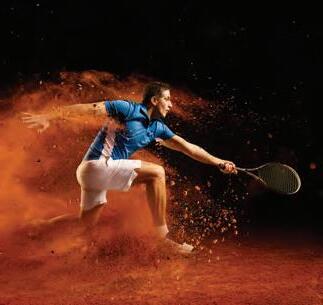

Whilethe 2025 league season officially wraps up in just a couple months with the conclusion of Nationals, I wanted to take a moment to celebrate and thank everyone who’s been part of this incredible journey so far. It’s been an epic season, and I couldn’t be prouder of our players—from the longtime veterans who’ve been part of the
By Milly Keighery


leagues for years, to the brand-new faces taking their very first swing. You’ve all made my first season as Adult League Coordinator truly unforgettable. We kicked off Sectionals in August, with teams proudly representing Long Island at the 18+ and 40+ Sectional Championships in both Westchester and Schenectady. While only one team will advance to Nationals in October—
congratulations to Donna Healy’s 3.0 Women’s team!—every LI team battled hard, competing in some truly nail-biting matches. I even got to experience that intensity firsthand, facing off against a few of our amazing LI ladies with my own team!
And while competition is at the heart of what we do, what really stood out was the team spirit, camaraderie and


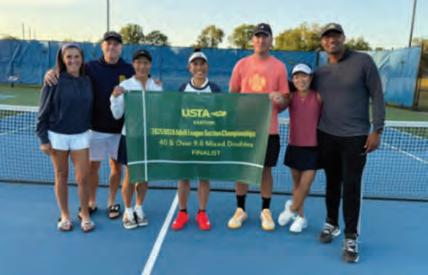


pure joy that come from being out on court together.
September brought the 55 & Over Sectionals which was held at a new venue in New Jersey this year. Long Island was once again incredibly wellrepresented, with seasoned teams playing some phenomenal tennis. The results speak for themselves!
Congratulations to the following teams advancing to Nationals:
• Jackie Mazzarone’s 55+ 7.0 Women’s team
• Adam Moramarco’s 55+ 6.0 Men’s team
• Matt Crowley & Sarabjit Lamba’s 55+ 8.0 Men’s team
• Lionel Goldberg & Robert Chesney’s 55+ 9.0 Men’s team
To wrap up Sectionals, the 65 & Over and 40 & Over Mixed Doubles divisions also took place in New Jersey. Once again, Long Island showed up strong.
Congratulations to the following teams who will represent the Eastern Section at Nationals:
• David Ng’s 40+ 6.0 Mixed Doubles team
• Terry Kossegi’s 40+ 8.0 Mixed Doubles team
• Roslyn Chua-McAlonie’s 40+ 9.0 Mixed Doubles team
• Mary Alice Ruppert’s 65+ 6.0 Women’s team
• Lydia Eitel’s 65+ 8.0 Women’s team
This fall, I’m thrilled to introduce an exciting new initiative: the Fall 40+ Women’s 2.5/3.0 Combo League.
Matches have just begun, and if you’re interested in joining, please reach out to me directly—I’ll help you find a home on one of the teams.
And because the world of tennis never slows down, we’re already in full swing for our 2025 4.5 Tri-Level Leagues for men and women, as well as the 2026 18+ Mixed Leagues. Teams are still looking for players, so if you want in on the action, email me at keighery@eastern.usta.com.
Up next: the 2025 4.0 & 5.0 Men’s and Women’s Tri-Level Leagues, followed by the 2026 40+ Mixed League.
Here’s to another season of great matches, even greater teamwork, and the unbeatable energy that makes Long Island tennis so special!
Here is the full list of the teams that represented Long Island at Sectionals:
18 & Over Women
• 2.5: Point Set - Stratos/Ireland
• 3.0: Deer Park - Taylor/Dikman
• 3.5: Port Washington - Ma
• 4.0: Huntington - Roslyn
• 4.5: Huntington - Newell/Giovanni
40 & Over Women
• 3.0: Christopher Morley - Healy
• 3.5: Blue Point - Mazzarone
• 4.0: Bethpage - Banks/Carroll
• 4.5: Roslyn - Tacher/Sorin
18 & Over Men

• 3.0: Lynbrook - Feldman/Minoff
• 3.5: LynbrookMosquera/Brahmbhatt
• 4.0: Blue Point - Subject/Peters
• 4.5: Long Beach - Low/Siddiqui
• 5.0: Long Beach - Siddiqui

continued from page 55
40 & Over
• 3.0: LIHR
• 3.5: Christopher Morley
• 4.0: Christopher Morley
• 4.5: Carefree - Chesney/Perri
55 & Over Women
• 6.0: LIHR - Roberts
• 7.0: Blue Point - Mazzarone
• 8.0: Roslyn - Rey/Franklin
65 & Over Women
• 6.0: Bethpage - Ruppert
• +8.0: Syosset - Eitel/Giovanni
55 & Over Men
• 6.0: Morley - Moramarco
• 7.0: LIHR - Kronenberg
• 8.0: Syosset - Crowley/Lamba
• 9.0: Robbie Wagner/CarefreeGoldberg/Chesney

The 40+ 6.0
65 & Over Men
• 7.0: LynbrookRothman/Lindenman
• 8.0: Syosset - Khullar/Lamba
40 & Over Mixed Doubles
• 6.0: Morley - Ng/Yang
• 7.0: Lynbrook - Healy

The 55+ 9.0
• 8.0: Carefree - Kossegi/Siler
• 9.0: Deer Park - Chua-McAlonie
Milly Keighery is the new Adult League Coordinator for USTA Eastern/Long Island. She may be reached at keighery@eastern.usta.com













TennisFantasies with John Newcombe and the Legends, the original tennis fantasy camp, is your chance to play tennis and rub shoulders with the all-time greats of the game. Join host three-time Wimbledon Champion John Newcombe and his “mates” at the John Newcombe Tennis Ranch in New Braunfels, Texas for a most memorable tennis event.
The legendary staff will include International Tennis Hall of Fame Members John Newcombe, Mark Woodforde, Charlie Pasarell and Jonathan Stark, as well as Grand Slam winners Ross Case, Dick Stockton, Brian Gottfried, Rick Leach, Luke and Murphy Jensen, plus Johan Kriek, Mikael Pernfors, and Dani Visser. Together, more than 150 Grand Slam titles and

hundreds of other major championships are assembled under one roof! Learn, play and mingle with tennis royalty.
Tennis Fantasies 2026 offers two great programs:
March 5 - 8, 2026
Tennis Fantasies (Men and Women)
October 18 - 23, 2026
Tennis Fantasies (Men Only)
On-court activities include clinics, team competition, and “fantasy” proam matches. After tennis, guests will enjoy the “Aussie-style” hospitality of the John Newcombe Tennis Ranch. The Ranch is located just outside of
New Braunfels in the rolling Hill country of central Texas, 30 minutes from the San Antonio airport. The crystal clear water of Canyon Lake, the Guadalupe River, and the Comal River are just minutes from the Ranch.
Accommodations at the John Newcombe Tennis Ranch are one- or two-bedroom condominiums or a courtside room. The Ranch has 32 deco-turf and four Har-Tru courts, eight lighted and four all-weather covered courts for guaranteed tennis every day.
You don’t want to miss this magical tennis adventure. Join John Newcombe and his “mates” for the best tennis vacation of your life!For more information, visit TennisFantasies.net, contact SteveC@TowneProperties.com or call (513) 489-9700.

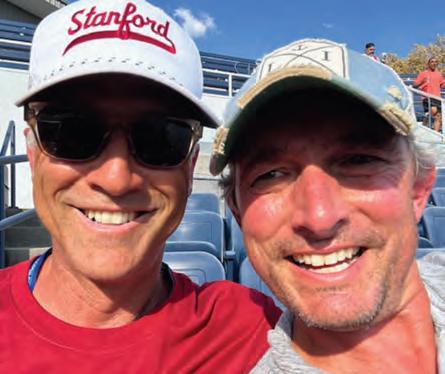
Thelandscape of college tennis is always changing, especially with the advent of NIL, the transfer portal and the influx of international players. As someone who competed in college tennis at the highest levels, I think examining the dynamics is important, and so I spoke with my former Stanford teammate Paul Goldstein who is currently the head coach of the Cardinal.
Goldstein is the only person to ever win Kalamazoo three times, and is the last person to defeat Novak Djokovic in the opening round of a Grand Slam. Here is Part Two of my interview with Goldstein where we discuss advice for high school tennis players, junior tennis players, and their parents.
The final part of my sit down with Goldstein will be featured in the January/February 2026 edition of Long Island Tennis Magazine.
Becker: What are some of future challenges you see ahead for college tennis?
Goldstein: All the changes that are happening in collegiate athletics amount to one primary thing, and that's that more resources are needed to stay competitive. The athletic departments are going to prioritize the sports that generate revenue for them, which is primarily football and basketball. So tennis, right now, just isn't one of them. There are opportunities in tennis for programs to generate revenue such
By Ricky Becker
as court rentals, clinics and things like that. But I'd say that our biggest existential threat is just resources available to our sport. Now, having said that, we lament anytime a tennis program gets cut, and rightfully so, but we still have about 270 Division I tennis programs out there. In comparison, there's like 13 men's gymnastics programs in Division I out there. So we have a lot more depth than other sports, but it’s still the biggest threat we face.
Becker: What's your view on high school tennis from a recruiting standpoint? Do you think that there's an overarching opinion among tennis coaches?
Goldtsein: I can't speak for all college coaches, I can only speak from my experience. The players that we are recruiting almost all don't play high school tennis. I don't hold it against anyone for playing, I think it's awesome, it gives you some experience on a team, but the reason they don't play is because they are all going to school online. And there are just no online high school tennis teams. I think I've got a guy coming in a year from now, Fall 2026, who goes to a traditional brick-and-mortar school. And that might be the first student-athlete I've recruited from a traditional brick-andmortar school in half a decade.
Becker: If you had two people who were the same quality
player, had the same ranking, etc. but one played high school tennis and one didn't, would you have a preference to the high school tennis player, or does it not matter?
Goldstein: If it was truly equal, I'd prefer the high school tennis player, but it's hard to believe any two people are going to be equal. But I would give the slight advantage to the high school tennis player, because he's got experience of being on a team. I think that's actually more important than people give it credit for. However, if it's not equal, I prioritize the player who I think would give us a better chance to be successful and win. I feel that we have a strong enough culture here where we can incorporate players into here and have them feel like they are part of a team and understand what it means to be a selfless teammate, and teach them that here.
Becker: Do you have general coaching advice or mantras for junior players or college players in general from the player development side of things?
Goldstein: I think the biggest thing is the coach and player being on the same page. Understanding what the player does best, and working together to figure out how to impose what you do best on your opponent as often as possible. Before they get to me, there should be a lot of that
technical work and foundation being set. We don't do a lot of technical changes, at least not significant ones in college. I guess the other thing that I think of a lot is our practices don't tend to spend time on improving marginal weaknesses, but rather honing strengths. The example I'll give is Andy Roddick. He was a great player when he started working with Brad Gilbert, but hadn’t won a Slam or crack the Top 5. Gilbert said to him, “We're gonna make two changes right away. Number one, you're going from wearing a visor to wearing an actual hat. And number two, you've got the biggest forehand and the biggest serve in the world; let's make our opponents deal with that as much as possible and not spend 80 percent of our time improving your backhand.” I’d much rather him find a forehand from the backhand alley than hit a backhand, because that’s what he does best. So that’s the best general advice I’d have.
Becker: You won sportsmanship awards as a junior, and if they give out sportsmanship awards to tennis parents, your parents probably would have won it. What advice would you give to tennis parents of a high-level player?
Goldstein: I appreciate you saying that, and my parents would appreciate you saying that. They were phenomenal. My parents never pushed me, and I was always selfmotivated. But they were incredibly supportive, and sacrificed a lot for me. My dad had four rules for me every time I stepped on the court. Have fun; don't beat yourself, make your opponent beat you; think; and be a gentleman. So as long as I followed those four, we were good. He always told me, ‘You don't owe me a thing, if you want to quit playing tomorrow, that's fine.’ As I got older, there was one thing that I realized but didn’t appreciate at the time was that he never equated


financial investment into my tennis with results. So, at no point did he say, I just spent X amount of dollars on a lesson, or we spent X amount of dollars for this hotel room, and you lost first round. Never. That's something that, in retrospect, I appreciated quite a bit. So I would tell parents to let their kids fail! You hear the phrase “helicopter parent” used a lot, but the other phrase that is less common is “snowplow parent”. They clear every obstacle out of their child's way and don’t allow them to fail. It's important for kids to learn how to fail, to build resiliency and to learn. They, the child, has to go through that failure and learn from that experience. And if they don't act in a way that's consistent with your values, hold them accountable, and teach them to control what they can control. I'm not talking about a missed shot, or a result, I'm talking about the things that are within their control, which are attitude, effort and how you treat others.


Let’s begin with a scene.
Imagine you’re a film director — and the scenes you’re about to direct aren’t fictional. They’re unfolding now: on courts, in locker rooms, in car rides home. And in these stories, there are three lead roles — the player, the parent, and the coach.
Before each act begins, a simple question appears on the screen: What if...?
As you read each question below, pause. Don’t answer too quickly. Reflect. Consider what it would mean to truly embody these what-ifs — not just in theory, but in action. Because reflection, like rehearsal, only matters when it shapes performance.
What if you approached your training with the same pride and focus you bring to your favorite subject — not because someone demanded it, but because mastery itself became your goal?
What if, instead of resenting your court assignment or fatigue, you trained your mind to treat every condition as fuel — not friction?
What if you carried yourself with respect — even under pressure — because that’s the player you’re becoming?
What if you asked hard questions when things weren’t working, but asked them with curiosity, not panic?
A Reflection on Choice, Control, and the Stories We Tell Ourselves
By Eldad Campbell

What if you tuned out the noise—the sideline chatter and half-informed opinions—and grounded your decisions in real conversations and direct observation?
What if, before reacting to results, you paused and asked: Does this serve my child’s long-term development or just my short-term emotion?
What if you gave 110% not only in effort, but in intention?
What if every player who crossed your path—not only those you coached—felt like they mattered because you made sure they did?
What if you collaborated more— invited feedback, exchanged ideas with peers, and embraced critique as a form of shared growth?
But here’s the truth: life isn’t a movie scene — and it rarely plays out like the script we imagined.
Even with the best intentions, things fall apart.
Some days — maybe even weeks or months — you won’t show up with the same pride, intensity, and focus you bring to your favorite subject or hobby. What now?
You’ll resent drills, court assignments, even teammates when exhaustion or unfairness creeps in. What now?
The hunger to improve may still be
there, but the environment dulls it. What now?
Asking hard questions is difficult when you’re trying to preserve relationships — and sometimes, panic feels warranted. What now?
Tuning out the noise isn’t easy when the chatter is constant, or when half-truths from people you trust start shaping your decisions. What now?
When results don’t go your way — when emotion rises before reflection — the line between long-term development and short-term reaction can blur. What now?
There will be days you can’t give 110%.
The energy won’t be there. The connection won’t click. What now?
You’ll have favorites—not from bias, but from chemistry—and you’ll wrestle with that truth. What now?
You’ll invite collaboration, offer feedback, and get shut down or misread. What now?
We like to believe growth follows a clean storyline: effort, reward, progress. But sometimes, progress looks like standing still while everything you planned unravels. Sometimes it’s making ten mistakes before learning once.
Sometimes it’s being misunderstood by everyone — even yourself.
There’s no director calling cut, no retake, no guarantee that the next scene will make sense of the last. Because life
isn’t made only of what-ifs—it’s made in the moments when what if becomes what now.
And yet, there is something deeper — the question beneath every other question. The real question was never What if or What now It was always Why?
Why are you taking the actions and making the choices you’re currently making?
Why haven’t you been approaching training with the same pride and focus you bring to your best subjects? Why do court assignments, draws, or fatigue pull you away from treating conditions as fuel — not friction? Why do you drop your standard of respect under pressure?
Why is there hesitation — or panic — around asking the hard questions that
need asking? Why does sideline chatter or half-informed opinion still seep into your decisions? Why haven’t you consistently paused to weigh longterm development against short-term emotion?
Why have there been stretches when you haven’t brought intention alongside effort? Why haven’t all players who cross your path felt that they matter? Why do you let the fear of being shut down—or something else—hold you back from collaborating?
Understanding your why sheds light on the drivers shaping your choices. It lets you examine the source of your conclusions.
Do you choose from clear rationale

or from emotional residue, shaped by the wins, wounds, and hopes you’ve carried as a parent, as a coach, or as a player?
If so, is that really a choice, or has your past already chosen for you? And if your past has already chosen for you, what options do you have now?
Here’s the freedom hidden inside that realization: You can only do the best you know — until you learn not just to know better, but to live better.

Life is—and isn’t—a movie at the same time. It’s a script while you’re living it, but unlike film, you can rewrite scenes as you go. Every edit is a new draft of you.
Choose with intention. Review with honesty. When truth presents itself, have the courage to change.
Eldad Campbell is the High Performance Talent Development Specialist at Robbie Wagner Tournament and Training Center. He is a four-time representative of the Jamaican Men’s Davis Cup, Junior Davis Cup, World Youth Cup, and Pan American Games teams, and a former No. 1 junior tennis player in Jamaica. He provides counsel to high-performance tennis players, parents, and coaches, offering strategic guidance through the multifaceted landscape of the tennis industry. He can be reached via email at connect@eldadcampbell.com.
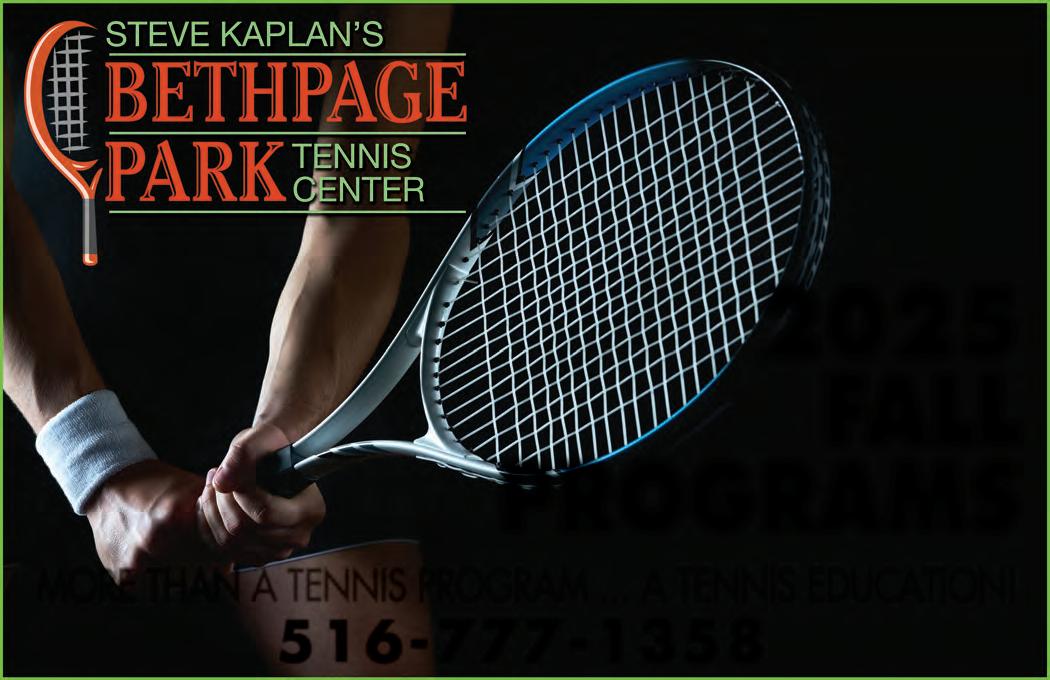

By Chris Lewit
Whenyou swing a knife or a sword, you may not be thinking about physics — but physics is definitely at play. The difference in how fast they move, how much force they deliver, and how they feel in your hand all comes down to principles like angular momentum and angular velocity. Interestingly, these same concepts help explain the evolution of the modern tennis forehand, particularly in how players wield lightweight, stiff racquets to produce explosive power.
Let’s dive into the science of rotational motion and then explore how it connects directly to your game on the court.
Velocity, Radius,
When you swing any object around a fixed point — your shoulder, elbow, or wrist, for example — you generate angular velocity. This is how fast the object is rotating. The linear speed at the tip (how fast the end moves through space) depends on how far that tip is from the axis of rotation.
Linear Velocity at Tip = Angular Velocity (�) × Radius (r)
This means that a longer sword or racquet (greater r) will have a fastermoving tip at the same angular velocity. That’s why longer weapons or tools can generate more cutting or striking force — if you can accelerate them.
Next, consider momentum — the product of mass and velocity:
Momentum = Mass × Velocity
A knife is easier to swing quickly, but it doesn’t have much mass, and its shorter length limits its tip velocity. A sword is heavier and longer, which means it may be harder to accelerate, but once it’s moving, it hits much
harder.
The angular momentum of a swinging object is:
Angular
Momentum (L) = Moment of Inertia (I) × Angular Velocity
Since longer and heavier objects have higher moments of inertia, they store more angular momentum and deliver more powerful impacts — but they are also harder to swing quickly.

Easier to accelerate
Knife — Yes
Sword — No
Reaches the target fast
Knife — Yes
Sword—Maybe (depends on swing)
Tip speed
Knife — Lower (shorter radius)
Sword — Higher (longer radius)
Force on impact
Knife — Lower (less mass & momentum)
Sword — Higher (more mass & momentum)
Angular momentum
Knife — Lower
Sword — Higher

Tennis Racket as a Weapon: The Sword of the Court
Swinging a tennis racket is remarkably similar to wielding a sword or knife. The human arm and shoulder act as pivot points, and the racket behaves like a lever, delivering energy to the ball via angular velocity and tip speed.
In the past, players used heavier wooden racquets, which had more mass but were difficult to swing quickly. These racquets demanded more compact arm lengths at impact and larger backswings and didn’t lend themselves easily to high angular speeds or extended lever lengths, or easily creating lag.
Modern racquets, however, are lighter and stiffer, and this has revolutionized the way players swing.
Because today’s racquets are lighter, players can swing them faster (higher
angular velocity) while also extending the lever — using a straighter arm. This increases the radius (r) from the shoulder or torso pivot point to the racquet tip. With both greater angular velocity and greater radius, players generate incredible tip speeds — translating into more powerful and spin-heavy shots. Importantly, players don’t need to take giant looping backswings to overcome inertia and to build high angular velocity.
Moreover, these lightweight racquets make it easier to use the lag phenomenon. The wrist can stay relaxed and “lag” behind the rest of the swing, only to accelerate through at the last second, adding whip-like acceleration to the stroke. This kind of sequencing is much harder with heavy wooden racquets due to their inertia.
From the Battlefield to the Baseline
The physics that governed ancient warriors wielding swords now
influence elite tennis players like Carlos Alcaraz or Emma Navarro. Both use compact backswings, a relaxed arm and wrist, racquet lag, a long lever, and exceptional angular velocity to generate explosive shots. Their strokes are a direct result of the physics of rotational movement — refined by years of technical evolution and better equipment.
Understanding angular momentum and its role in sports can give players and coaches a powerful perspective. Whether you’re holding a sword or a
Babolat Pure Aero, the same laws of motion govern your success.
If you’re coaching or playing, think about:
• Relaxed distal joints (elbow, forearm, wrist)
• Compact backswings
• Lever length (longer = more tip speed)
• Racquet mass (lighter = easier to accelerate)
• Timing and sequencing (lag and whip = power and spin)
Train your body like a weapon — and wield your racquet like a sword.

Chris Lewit is one of America’s leading high-performance tennis coaches and a global authority on Spanish training methods. Known as The Prodigy Maker, he has developed numerous elite juniors, including many #1 players in the nation. A former #1 at Cornell and pro tour competitor, Chris is the author of The Secrets of Spanish Tennis and Winning Pretty. He studied literature at Cornell, Harvard, and Columbia and is pursuing a PhD in kinesiology.
Chris hosts The Prodigy Maker Tennis Show, runs a Vermont academy and online school, and is recognized worldwide for his technical expertise and inspiring coaching. Read more at substack.com/@chrislewit

CUSTOM FULL-TIME COACHING FOR HOMESCHOOL PLAYERS
PRIVATE COACHING, HIGH PERFORMANCE CAMPS, AND GROUPS FOR ALL LEVELS
HIGH PERFORMANCE SUMMER CAMP IN VERMONT
TRAIN WITH THE BEST— CHRIS HAS RECENTLY COACHED SEVERAL #1 PLAYERS IN THE US!
CHRISLEWIT.COM
914.462.2912
CHRIS@CHRISLEWIT.COM

